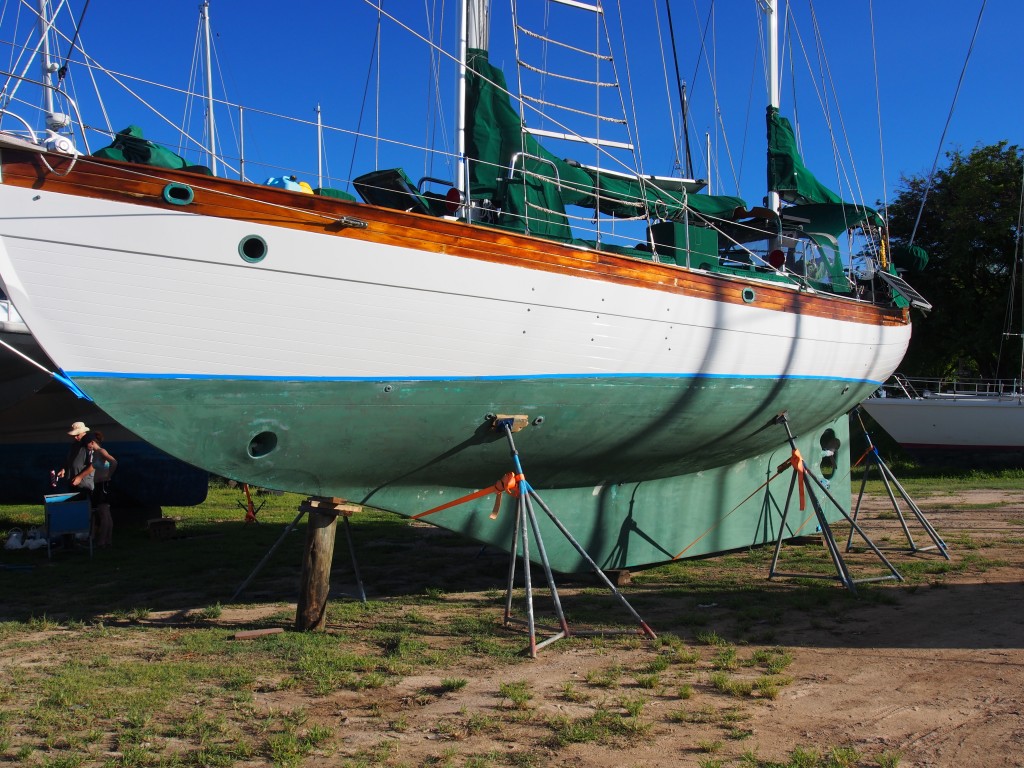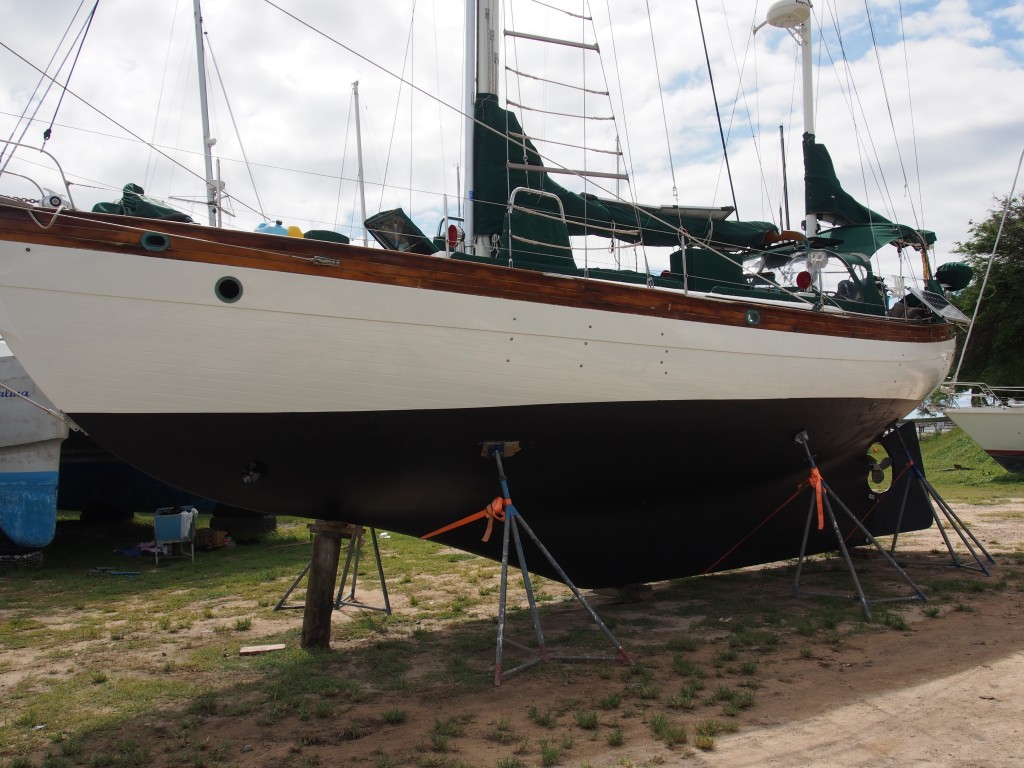On day 6 from Samoa to Kiribati we found ourselves in the doldrumsflat seas, no wind, and clear skies. We took down all sails to keep them from banging with every swell and decided to go for a swim. On all my prior ocean passages weve never had such calm water so this was my first mid-ocean swim. The water was about 16,000 feet deep and we took turns jumping overboard with snorkel and mask and swimming around the boat. We even stood on the bowsprit and swung on a halyard, landing 40 feet away at the stern of the boatdiscovering that by timing the start just as the boat rolled over an ocean swell, you could swing in a wider arc and have a longer ride! After a few hours, we finally gave in and started the motor to continue moving east. Day 7 was the perfect day at sea. After motoring all night (and getting more concerned about fuel consumption), the wind began picking up at 5am and allowed us to sail in a northerly direction. We sailed throughout the day and eventually the wind clocked around to the east, putting us on a NE heading pointing to Kiribati. Adam cooked up an awesome lunch of potatoes, sausage, cheese, and onion & garlic. In the early afternoon we pulled in our first fish a 3 ft long Wahoo. I filleted it on deck and we threw it in the refrigerator for the next day. We continued hand steering most of the day and then turned the helm over to Ian (our self-steering wind vane) for the evening watches. We watched a wonderful sunset, followed by Captains Hour an evening celebration with a Samoan beer, Tim-Tams, and music by Jimmy Buffet.
Update from Sea on Day 5
We departed Apia, Samoa during a downpour that lasted several hours. Seas were rough causing Doug to get seasick almost immediately. He mostly recovered by the following day as we sailed in an easterly direction. Currently at 11.18S, 166.45W with a 5deg heading. Today noon begins the 5th day of our passage to Christmas Island. Winds have been very light most of the way, with the occasional squall rolling through. We are averaging less than 100nm/day and have burned through 30 gal. of fuel so far, with about 100 remaining. Tactic now is to motor only when boat slows below 2 knots. This is definitely a difficult uphill passage! SSB problems prevented me from getting email and weather updates. Today I replaced the modem-to-computer cable (luckily had a spare printer cable) and problem fixed. For some reason I now have to tune the SSB manually where the modem used to do it automatically, but at least it’s usable now. Other issues–broken pin on one of the mains’l mast slides and PFD popped and we mis-installed our only spare recharge kit. On the bright side, we currently have wind and all 4 sails are up and we are moving at 6 knots, the fastest speed for several days now–Apropos (and crew) is loving it! Had some amazing night sails with no moon to block the star light. The tail of Hailey’s comet has also given us some outstanding meteor showers.
Onward to Christmas Island
Yesterday we provisioned, cleared customs and immigration, and got the boat ready for the next passage to Christmas Island, located at 2 deg N, 157.5 deg W. It’s about 1265 nm away from Samoa and we’ll be crossing an area know for light winds and squally conditions, so we’re estimating a slow passage taking approximately 15 days. Here’s the crew on our last night in Apia having pizza and beer.
New Crew–Doug and Adam flew into Samoa to join me on the passage to Kiribati. Doug is a former co-worker I’ve known for 15 years and has sailed on my boat in Puget Sound. He comes with lots of jokes that are usually not that funny! Adam was found through my crew search when one of my former crew members unexpectedly returned to Canada. He comes with lots of sailing experience with 2 Atlantic crossings and sailing in the Med and is working on his Coast Guard Masters License.
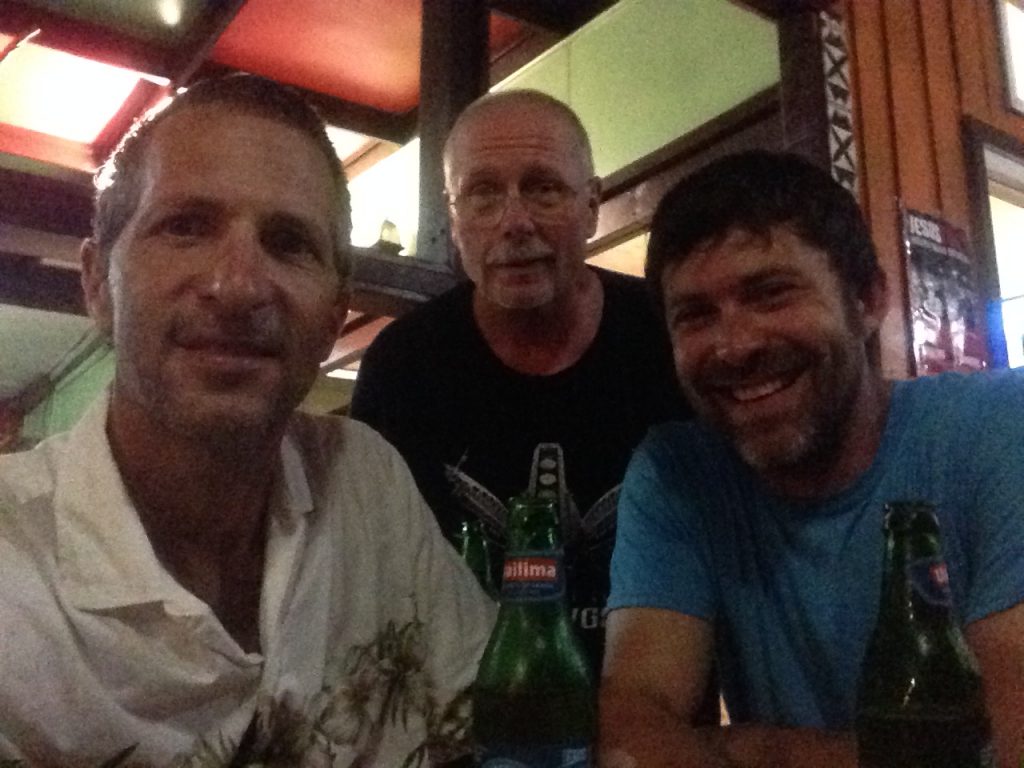
Apia, Samoa
The sail from Fiji to Samoa took us 5 days, 21 hours. We were able to sail the entire way and motored for only 10 hours, mostly after rounding the NW corner of Upolu Island in the shadow of the SE trades. This was an unusually fast passage for this route and we were helped by a southerly component to the trade winds. We docked at a mostly empty marina in Apia and celebrated with coconut drinks and Samoan beer. Dave and Denise are now blue-water cruisers and hope to continue sailing on their own someday to Alaska.
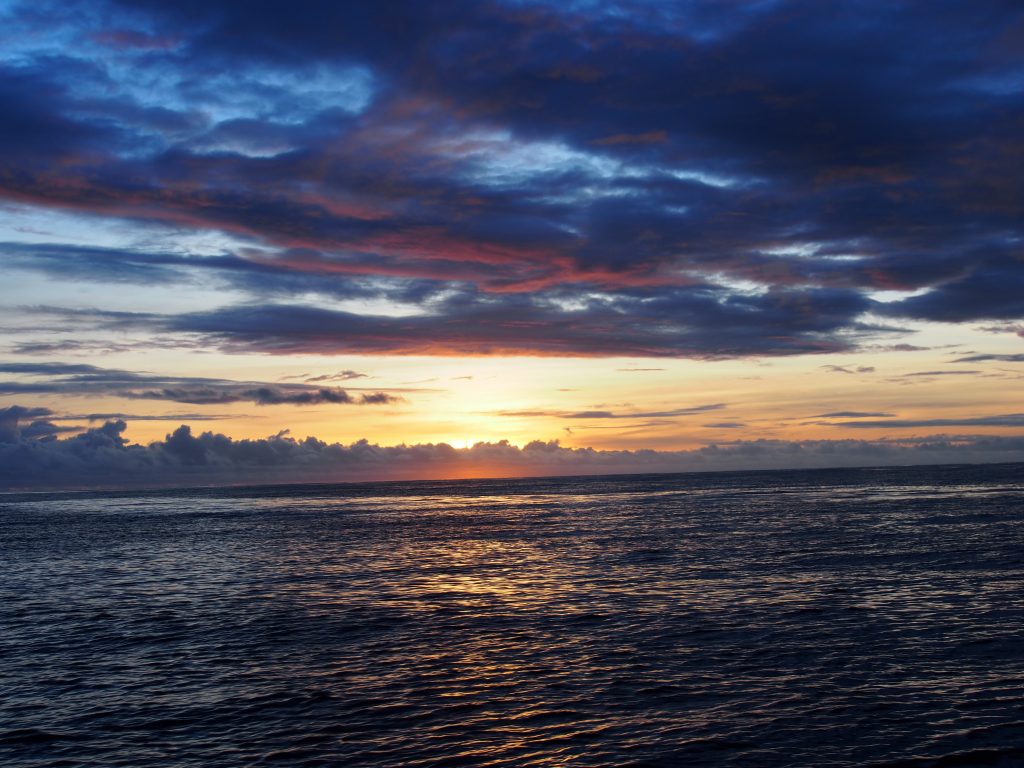
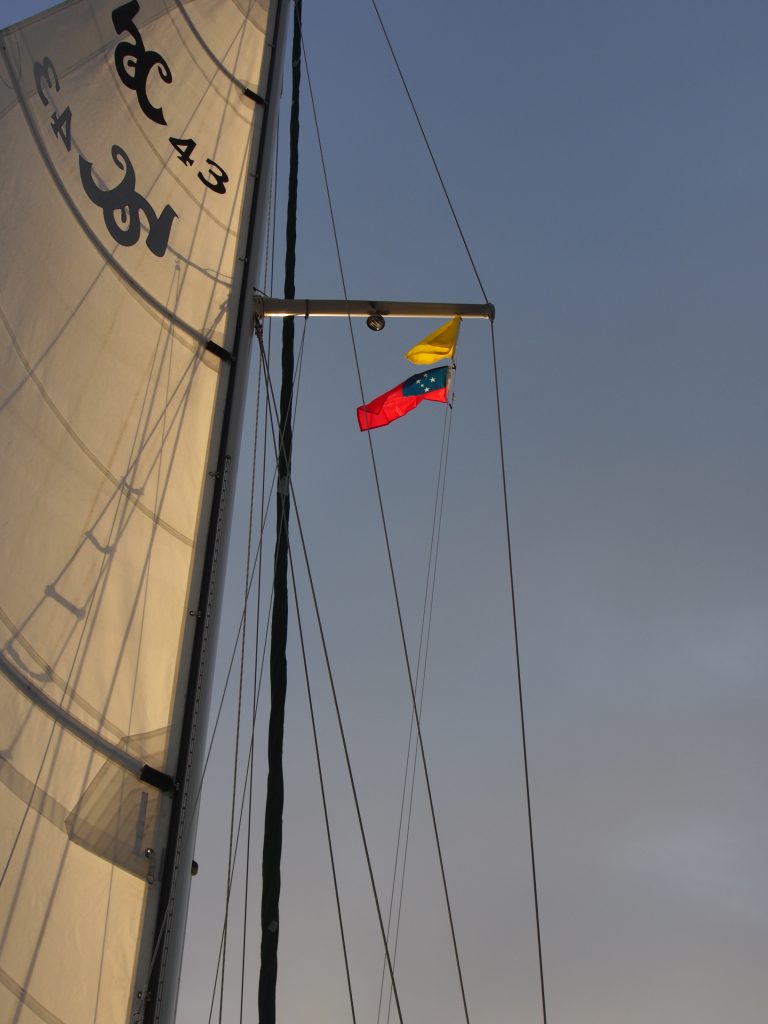
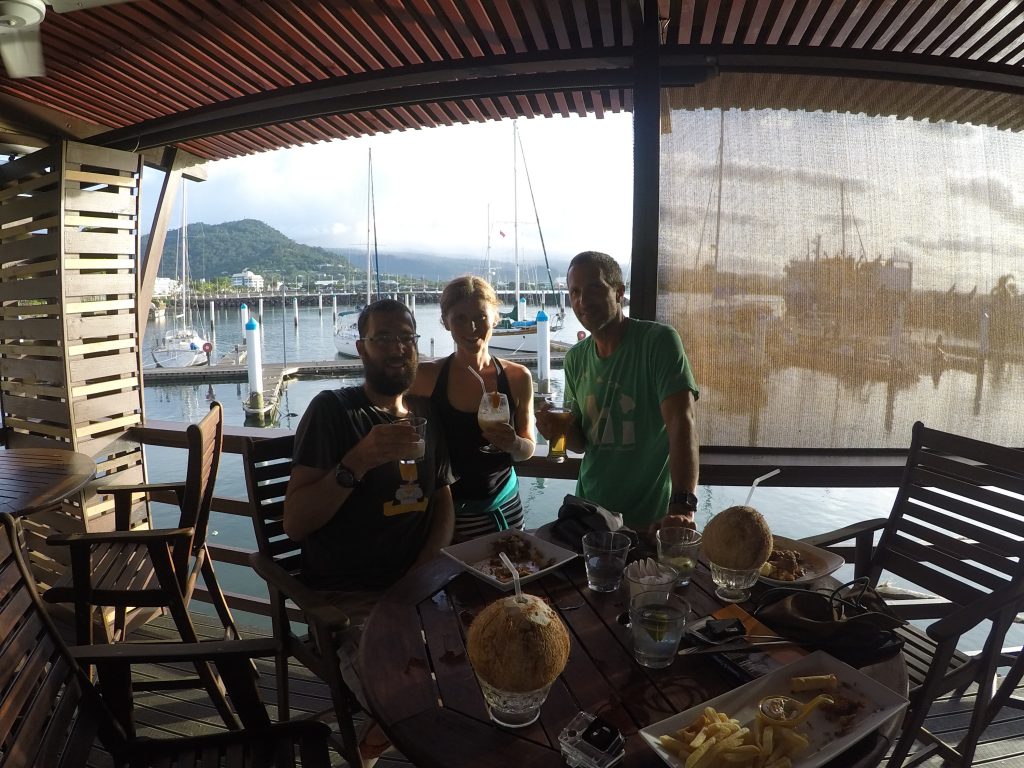
Apia is a great little town and Samoans are very friendly. My new crew (Doug and Adam) for the next leg to Christmas Island flew in and joined me on the boat as Dave and Denise went to a hotel and prepared to fly back to Seattle. We spent the next several days getting ready for another departure–provisioning, re-fueling, and fixing things. We also did some fun things like going to church and taking a tour around the island to experience some Samoan culture.
Church Service
The church service in Apia was outstanding! We walked about a mile to the biggest Catholic church in Samoa. Out of respect for Samoan culture, we all wore sulus to the service. The church architecture was amazing with the detailed paintings, marbled floors, colorful stained-glass windows, and high ceilings with wood carvings. The sermon was mostly in Samoan and lasted about 90 minutes. What made the service so special was the singing and how the interior acoustics amplified the voices.
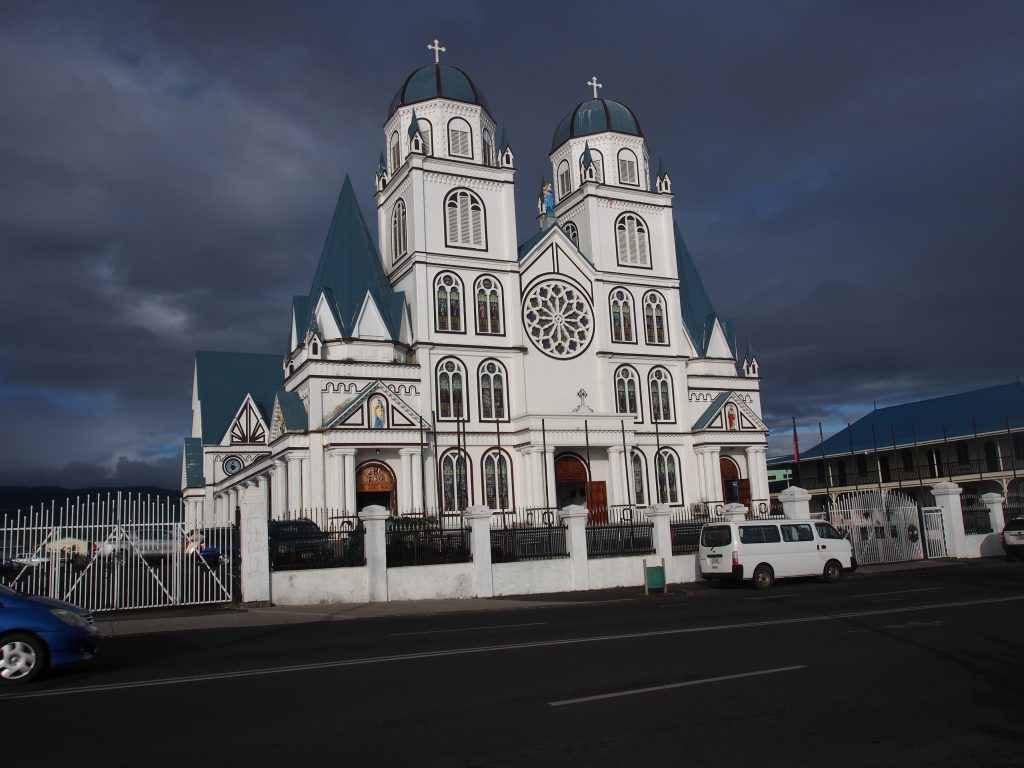
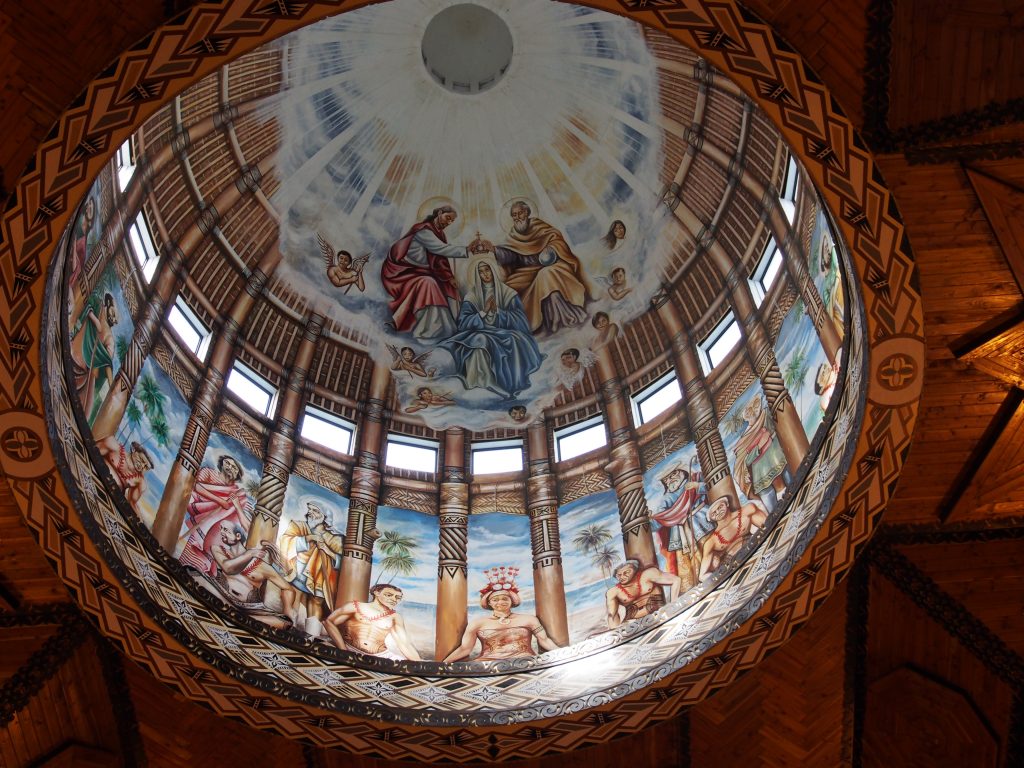
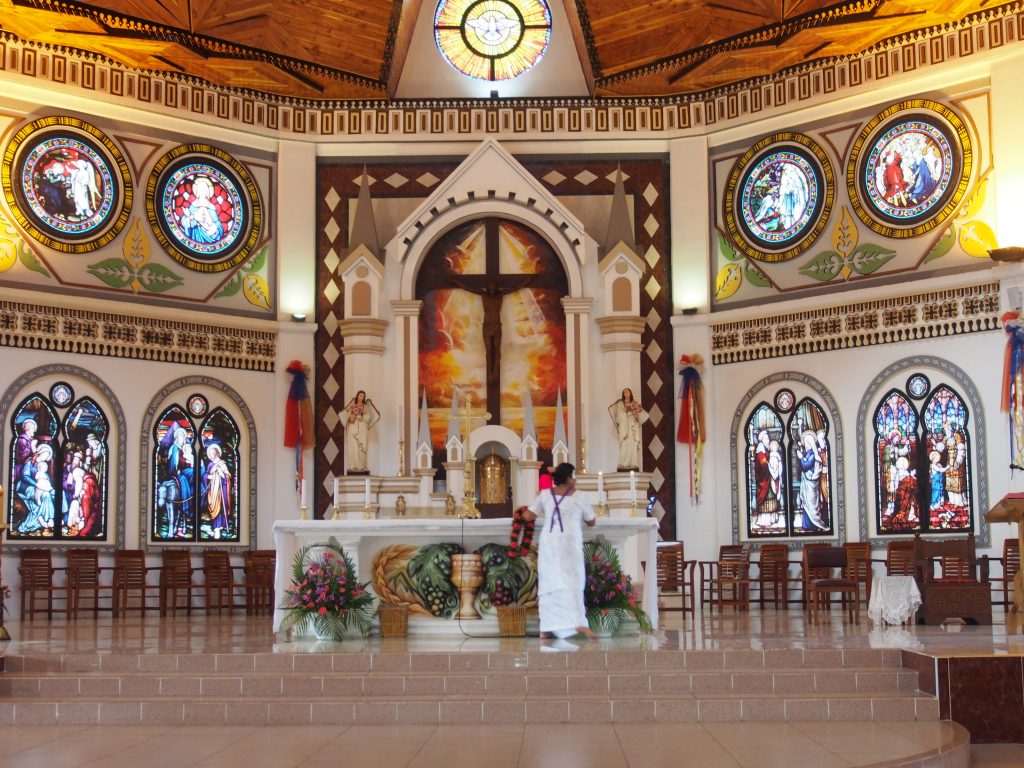
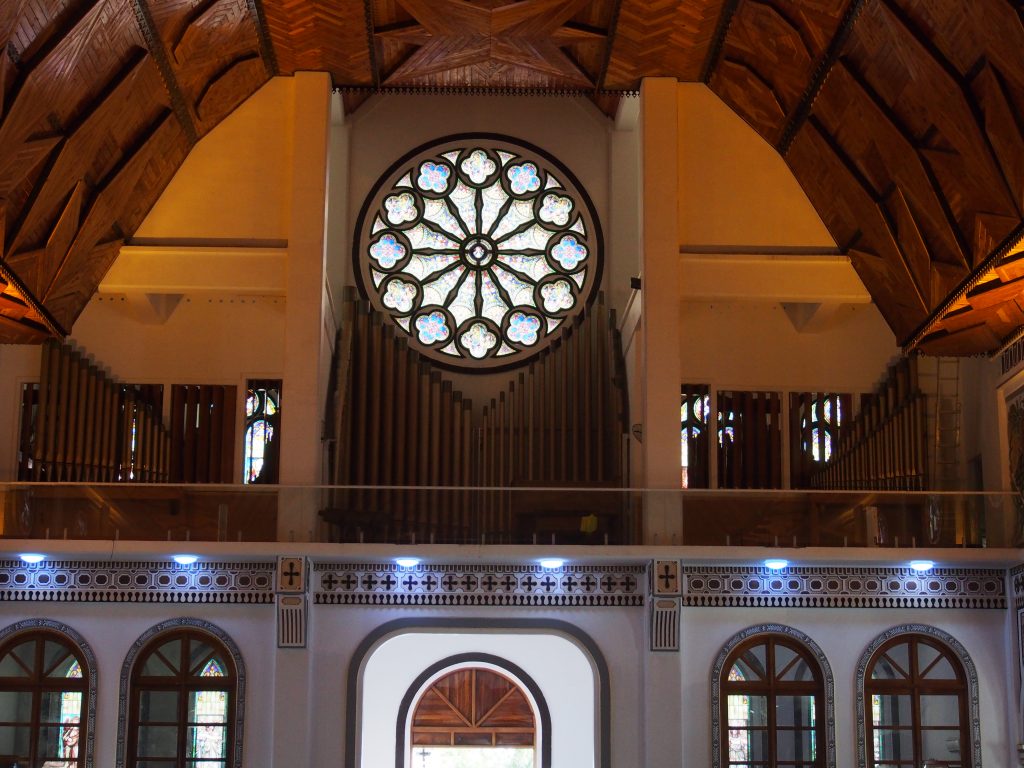
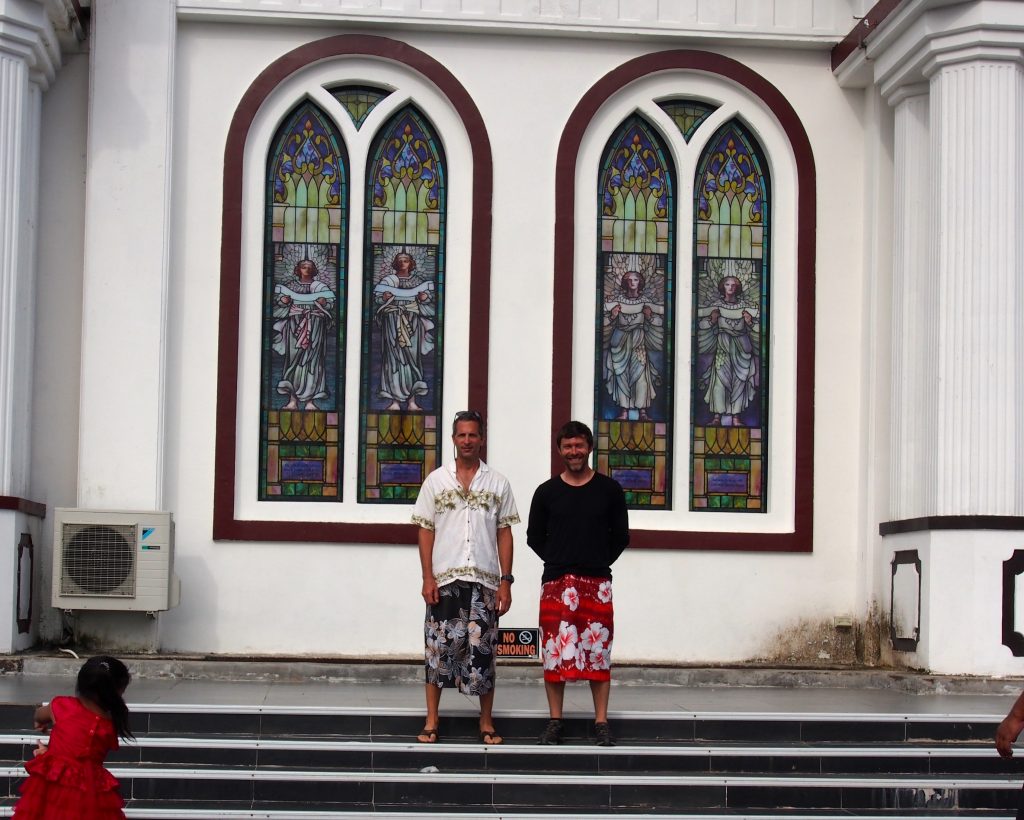
Island Tour
We took a half-day tour around the eastern side of Upolu. Our guide Junior told us lots of interesting facts and stories as we stopped at waterfalls, beaches, and historical sights along the way. One of the most fascinating places we stopped at was a swimming hole called Sua Ocean Trench. It’s a huge hole about 200 feet deep with 10 feet of seawater in the bottom and an underground trench connecting to the ocean. We climbed down the ladder and swam in the water with our snorkeling masks. The ocean surge forced seawater in and out of the trench and changed the depth of the water by a few feet. We also had a traditional Samoan feast at the Taufua Beach Restaurant & Fales consisting of pig, raw marinated fish (ceviche), taro root, chop suey with chicken, taro leaves with beef, and octopus in coconut milk.
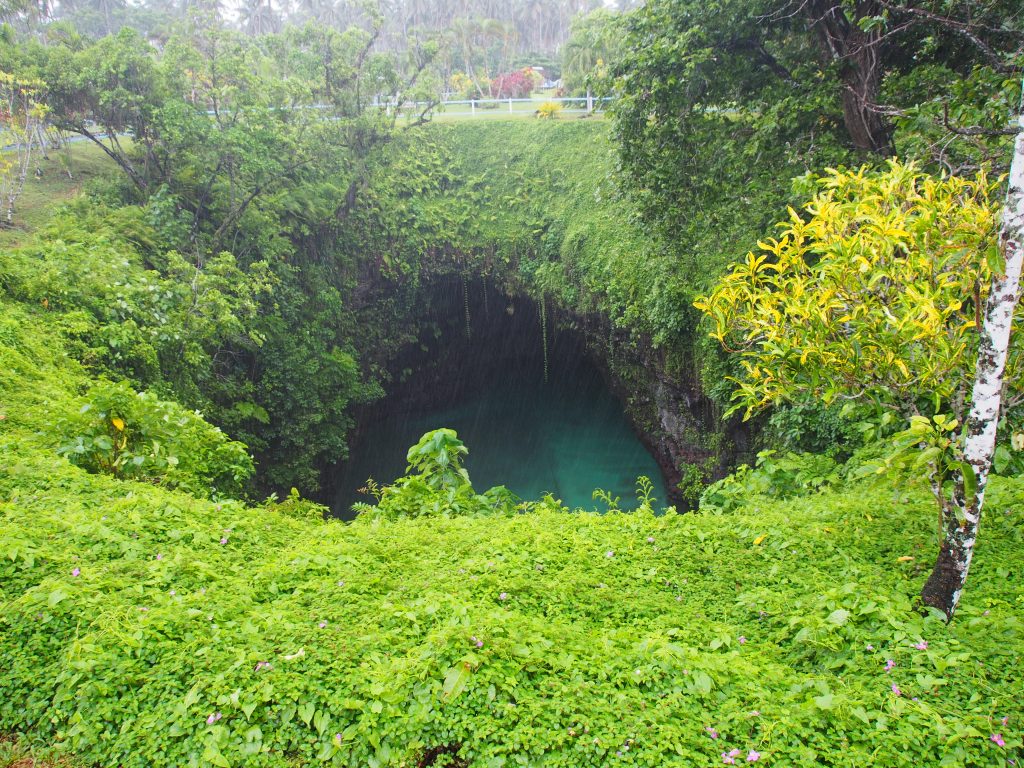
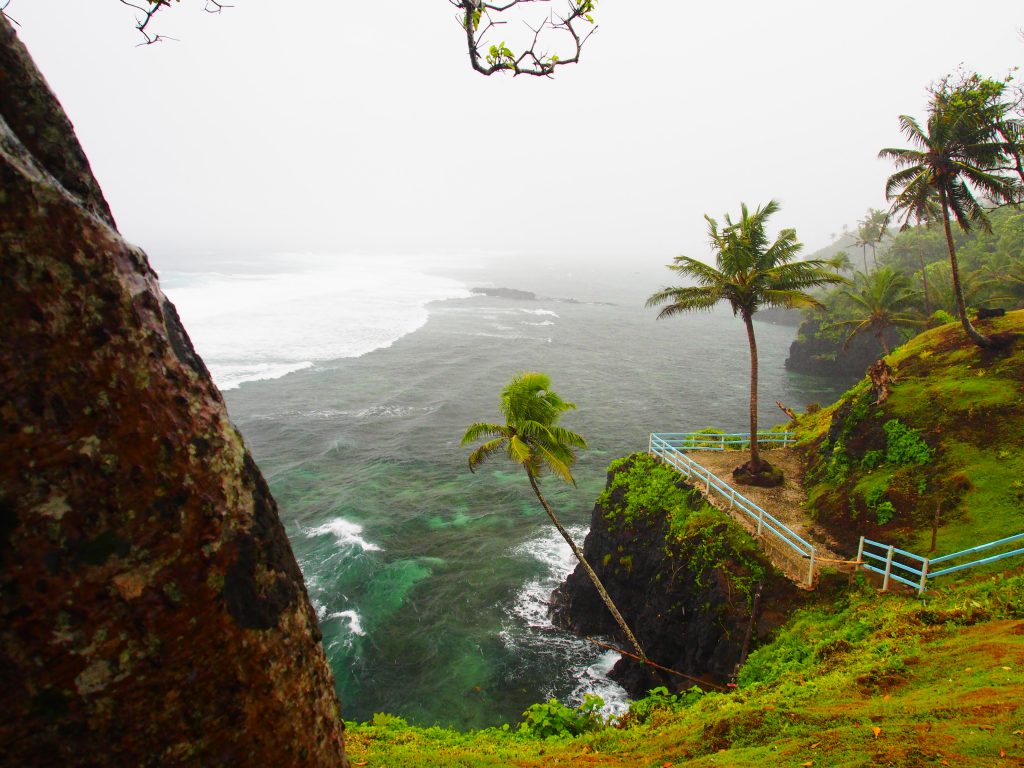
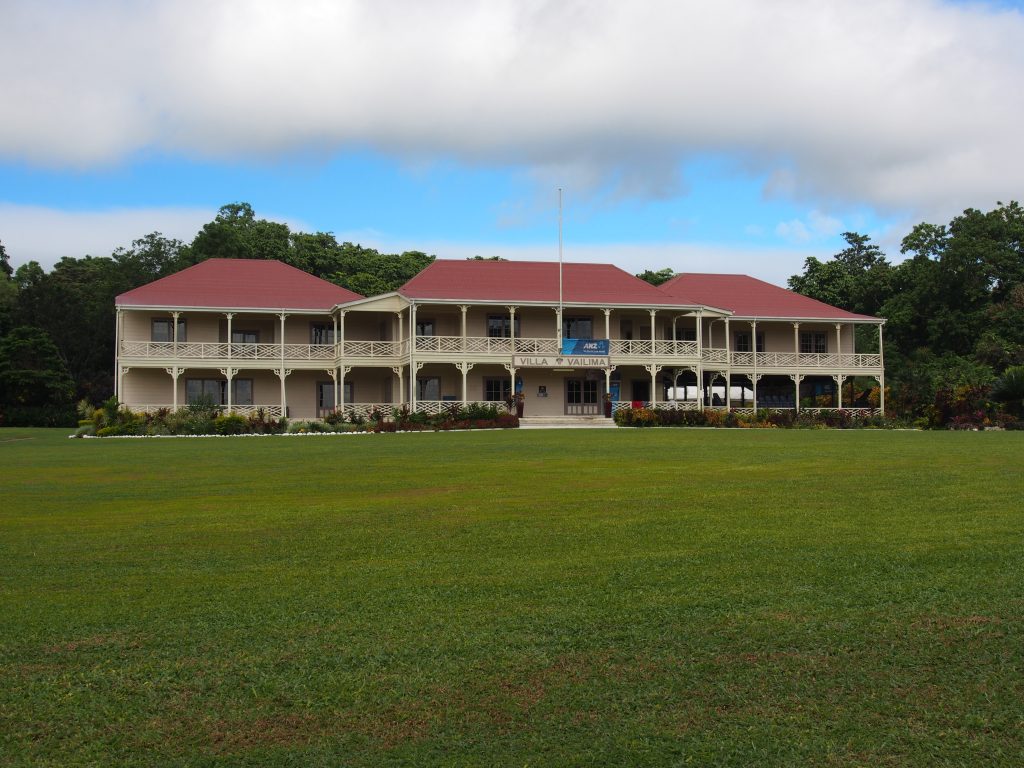
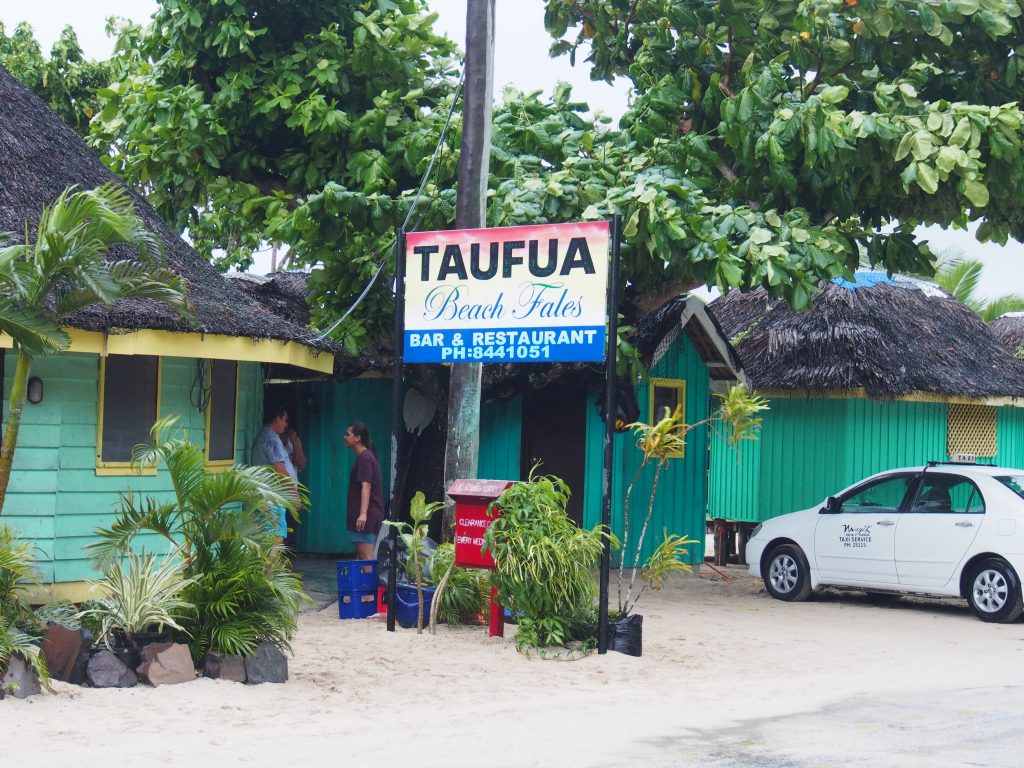
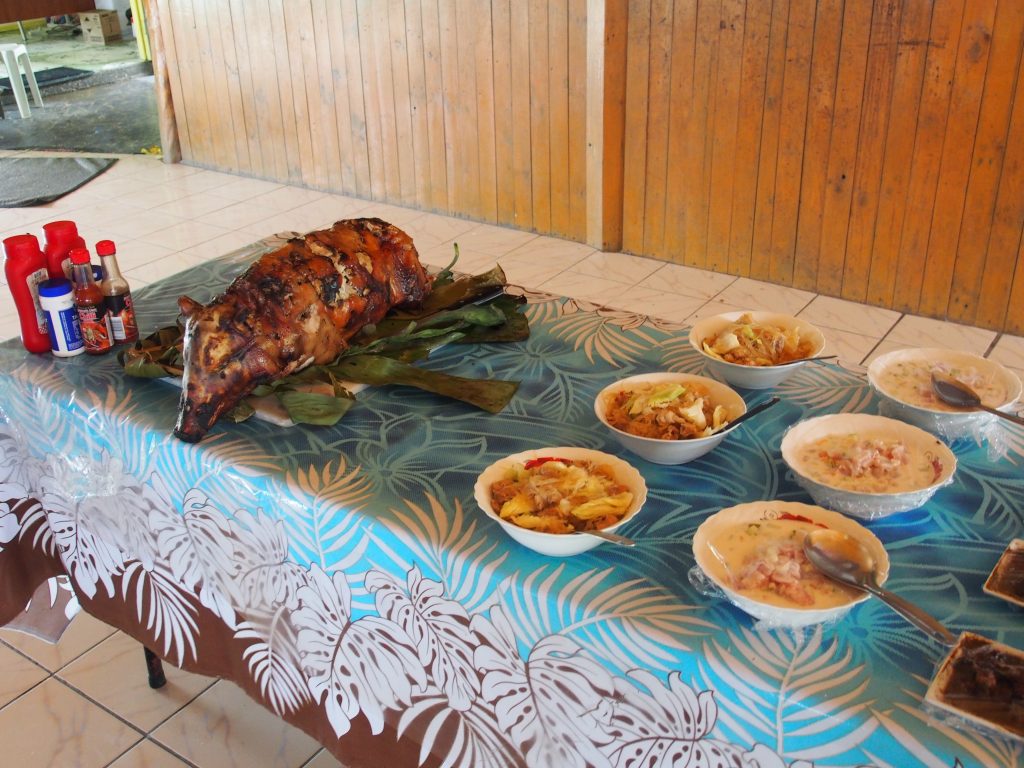
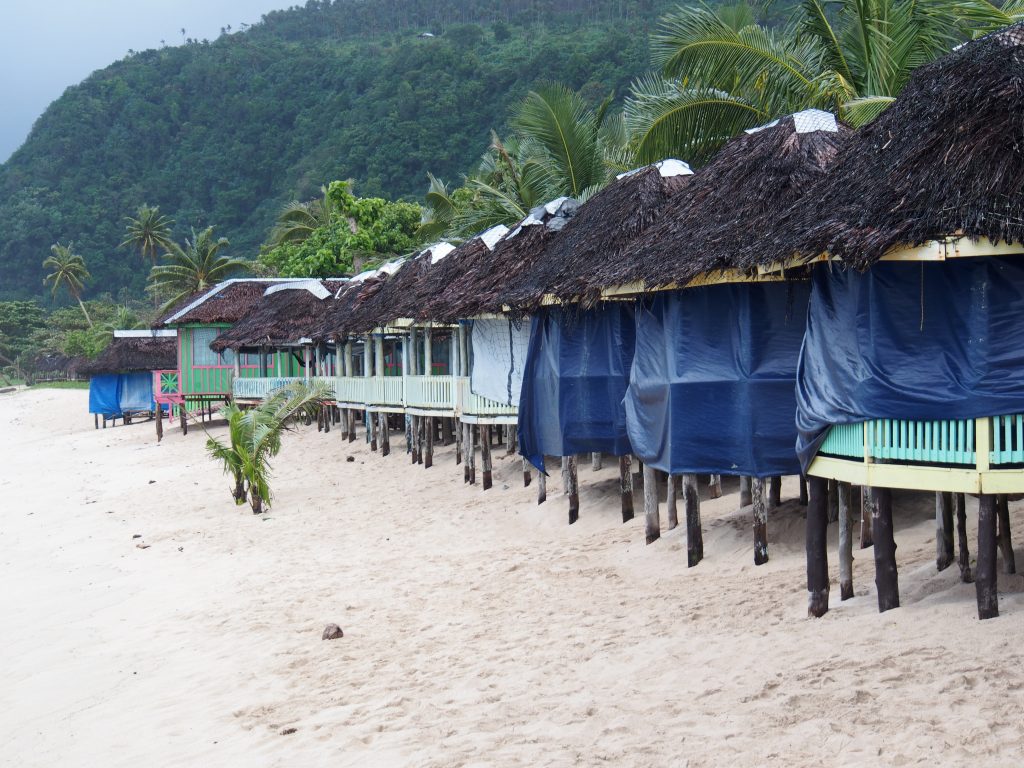
Update from Sea–Day 5
We were escorted out of Savu Savu bay by a dozen dolphins jumping alongside and swimming in our bow wake. Seas got extremely rough as we sailed south around Koro Island, then pointed NE to Nanuku passage, out exit path out of Fiji. Today begins day 5 of our passage from Fiji to Samoa and we are currently sailing on a fast, close-reach moving at 6.5 knots with full genoa, reefed main, and full mizzen sails. We are 250nm away from Samoa and a nice wind shift is allowing us to point more east. Seas have flattened some from what they were the past few days. Weve only motored for 6 hours over the past 96 hours and we should be able to sail the rest of the way to Samoa. Denise is starting to feel better now after 3 days of seasickness. She was able to take watch last night which gave Dave and I a break from a 2-person watch schedule. I really miss Karens galley skills. Since Im the only one able to go below without getting seasick, Ive been galley rat so weve been eating cup noodles, tuna salad, canned beans, hot dogs, fried eggs, fruit, and lots of snacks! Dave has gotten good with learning to sail Apropos and manage Ian, our self-steering wind vane who has steered us 95% of the way. Night watches have been amazing. We left on a full moon so every night has been lit up. We get about 2 hours of darkness to stargaze before the moon rises. The Southern Cross, Orion, Cirius, planets, the occasional satelliteall are fun to watch and help pass time at night. Then seeing the orange moon as it breaks above the horizon and watching it slowly climb as it lights up the ocean is one of the things I love about ocean sailing. Funny story about last nightDenise took her first solo watch starting at 6pm. As I handed off the helm, I told her to wake me if any problem came up. About 7pm she called for me to come on deck because she saw lights from a ship that didnt appear on the chart plotter AIS, and it was getting bigger and closer. I looked where she was pointing and couldn’t see ship lights. She must have thought I was blind and kept pointing. So I told her all I saw was the moon coming up. I think that was Denises first moonrise at sea!
Onward to Samoa (soon…hopefully)
Our final few days in Savu Savu were spent provisioning, re-fueling using 20 liter jerry cans, and tracking former Tropical Depression 17-F, now Tropical Cyclone Amos, as it moves east towards Samoa. Following behind the low pressure system could bring us some favorable southerlies to get us to Samoa faster. Of course we will watch it closely and be prepared to turn around if it does a 180. We will keep at least a 3-4 day separation from it. We’re planning on a 4-6 day passage. Found out today that Fiji Customs Regulation #WTF requires us to depart within 1 hour of clearing customs and immigration, so a daybreak departure isn’t possible. Good thing both offices are a 5 minute walk from Copra Shed marina, and they will open at 7am if we call ahead.
We found crew for the Samoa to Kiribiti passage, so we are back on schedule! Departing Savu Savu in 3 hours. Our planned route is to head south and go around Koro Island, then tack NE and point to Samoa. The Koro sea is still rough today but is expected to calm down some by tomorrow, so we will be moving slowly for the first 24 hours. Nanuku passage is wide so ok to go through at night.
Savu Savu
Another Tropical Depression
Well, it is still the rainy season in the South Pacific, but I’ve been in Fiji 19 days now and we’ve had 3 Tropical Depressions and 1 Tropical Cyclone! We had planned on leaving Makogai and sail to Savu Savu, about 50 miles north. After getting outside the reef, the wind, seas, and rain told us to go back to the protected harbor. We later received weather reports over the HF radio saying a strong tropical depression was headed our way. It was reported to have an elongated spiral, one step away from forming a tropical cyclone. We put out 125’ of chain and the 75 lb CQR anchor held well on the sand bottom. During the next 12 hours we filled 8-gallon buckets numerous times with fresh rain water running off the bimini and poured them into the water tanks. Wind gusts were about 40-50 knots overnight so we paid close attention to our GPS position to make sure we weren’t dragging anchor. Things finally settled down some at daybreak but the forecast was still for strong winds and showers so we stayed another day at Makogai.
We finally left Makogai and had a nice downwind sail to Savu Savu, 50nm north. Sailing under a reefed main and genoa, we averaged around 6.5 knots under mostly sunny skies with a few brief squalls. It’s great being back at the Copra Shed marina. Unfortunately, many boats were lost here during the cyclone. We were running low on food, so after a much needed shower, we went our for Indian food.
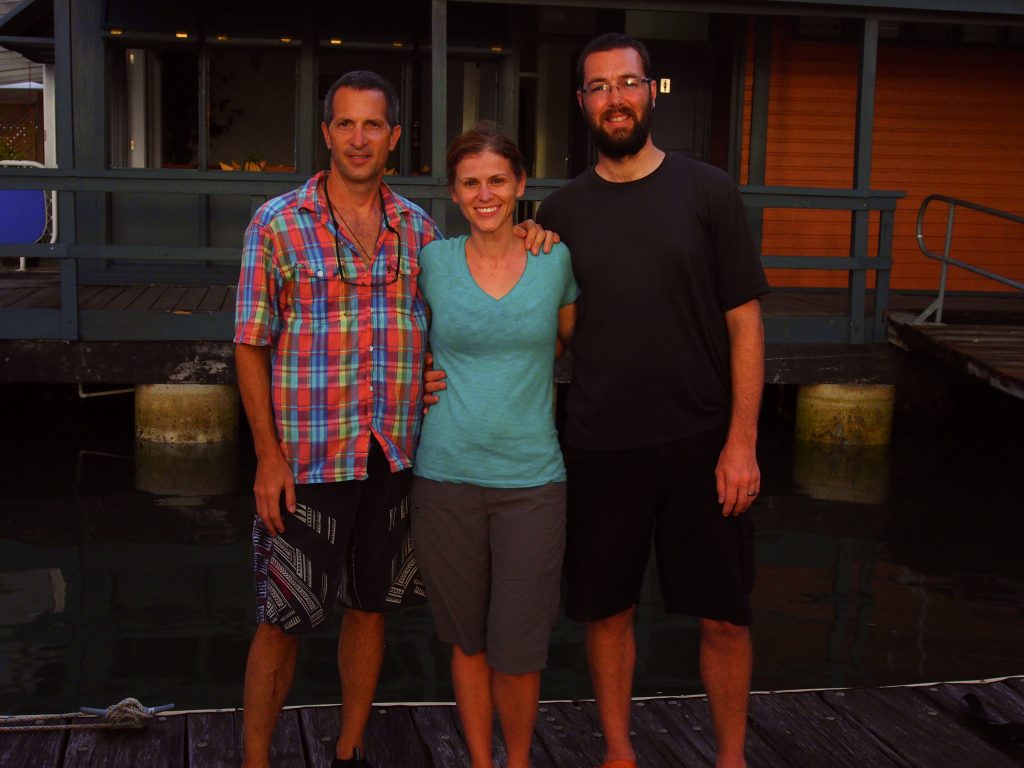
Makogai and Na Sau Village
Motoring clockwise around Viti Levu and beating into the wind, we took 3 days to get to Makogai. The destruction was obvious as we approached the anchorage–most of the coconut trees were just sticks, the wharf was destroyed, and only a few structures remained. We went ashore and joined the men there who had just started drinking kava. Most were from Na Sau village on the south end of the island and were there helping to rebuild the government’s Fisheries program. At the kava ceremony we heard fascinating stories about how they survived a category 5 cyclone by running from houses as the winds ripped the roofs off. After most of the houses were destroyed, they ran up into the hillside to get some shelter from flying debris. Amazingly, there were no deaths or serious injuries on the island. Most of the people at Na Sau ended up under the foundation of their houses, which was all that remained after the cyclone passed through. It was dark by the time we left the kava ceremony and we made plans for them to pick us up the next morning in their long boat to deliver the aid supplies to Na Sau. The half hour boat ride to Na Sau was rainy and windy. They tied up the longboat and we carried the supplies along a muddy trail to the village. There were lots of women and children at what remained of the village, some of whom I recognized from my visit last year. The school was completely destroyed and the 20 families shared what was left of their houses. The youngest there was a 10 month old girl, and the oldest was an 82 year old woman. Some of the kids that Karen, Jacintha, and I played frisbee, volleyball, and rugby with last year remembered us when I showed pictures of them on my camera. One of the village elders showed us around as the women divided our supplies up into 20 neat piles, starting with the food, then clothing, then toys. A prior Sea Mercy delivery vessel brought a portable Spectre watermaker unit (desalinator) which he turned on while we were there. It took about 2 hours to divide up the supplies, and by the time we left, some of the kids were running around wearing probably their first pair of Nike sneakers. There were lots of questions about some of the food we brought since they werent familiar with much of the canned food. The living conditions there are harsh, especially during the rainy season while they are still rebuilding their houses. We asked what they were most in need of so we could report back to Sea Mercy. A chain saw, more food, re-building the school (their makeshift school was a dozen or so desks under a torn tarp, making it difficult to have class during the rainy season) and more kids clothing were at the top of their list. We also left them with 8 LuminAid solar lights that we brought from Seattle. We took lots of pictures and heard stories about the cyclone during the 3 hours we spent there. They were very appreciative of Sea Mercy and thanked us for bringing the supplies.
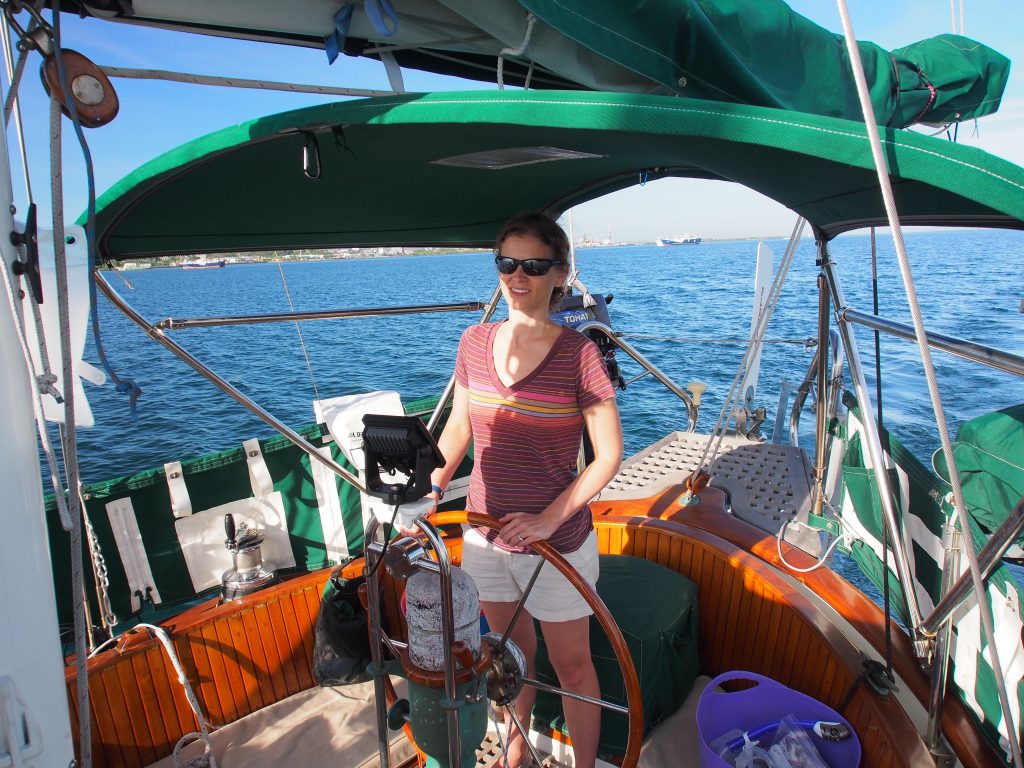
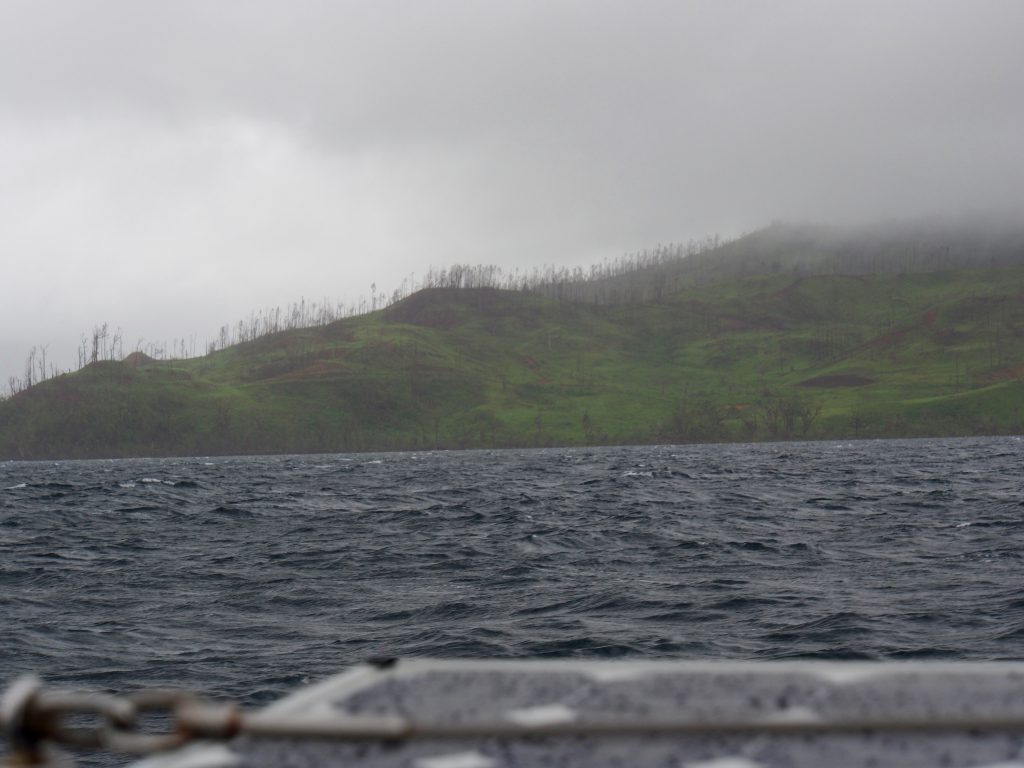
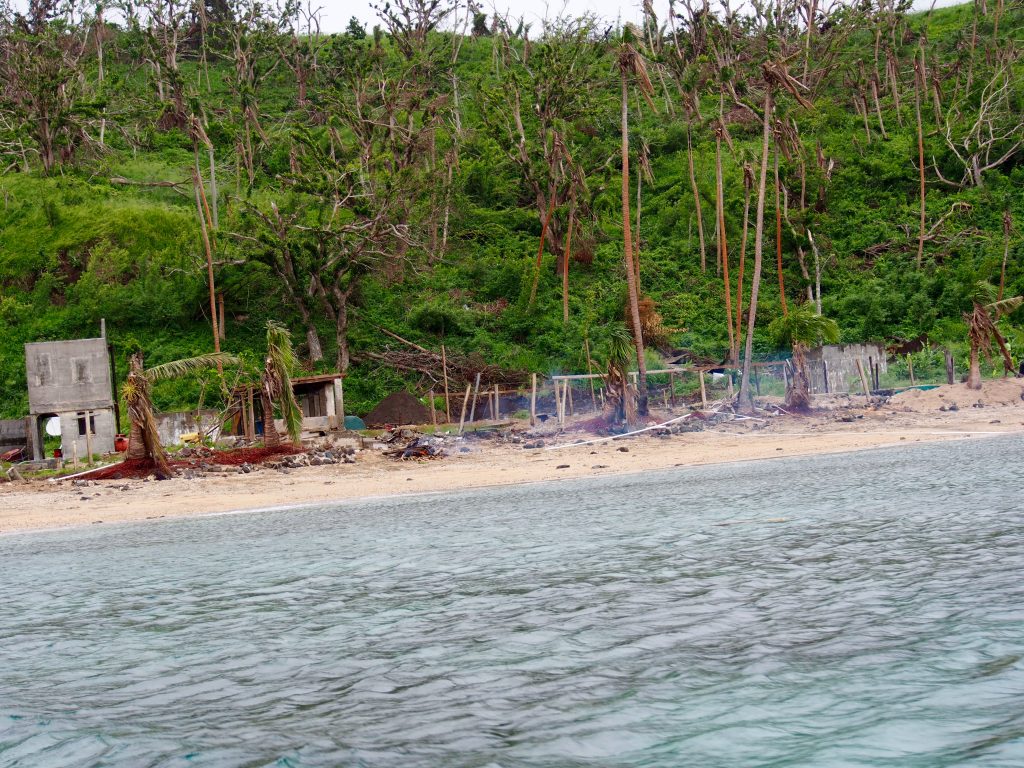
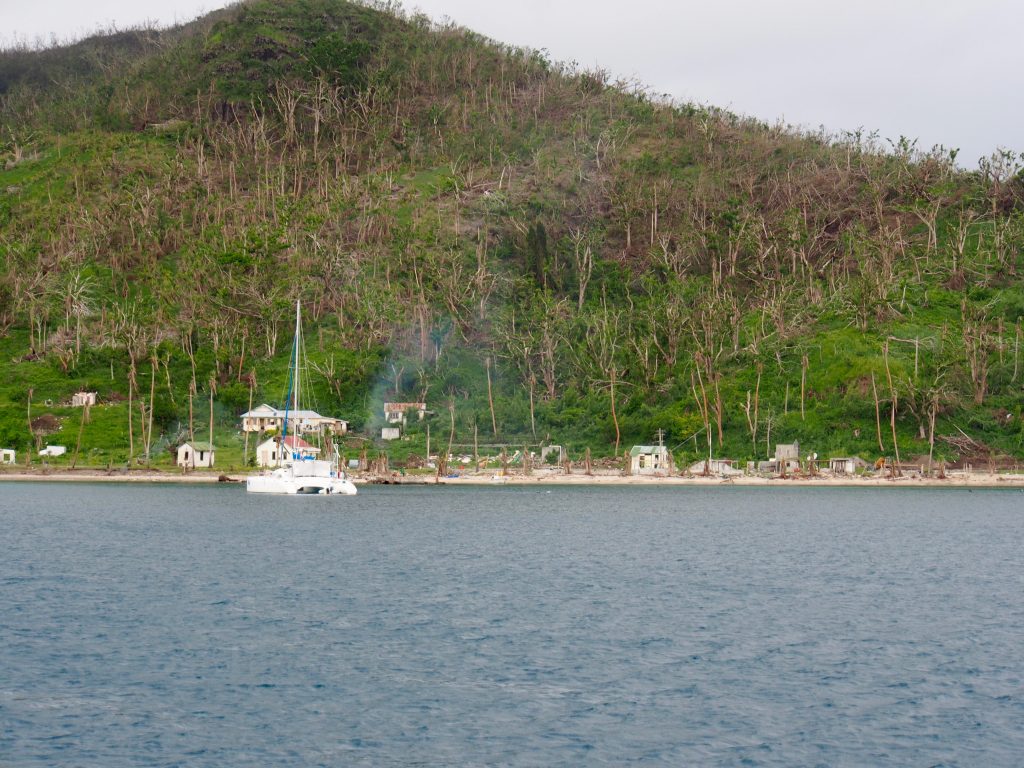
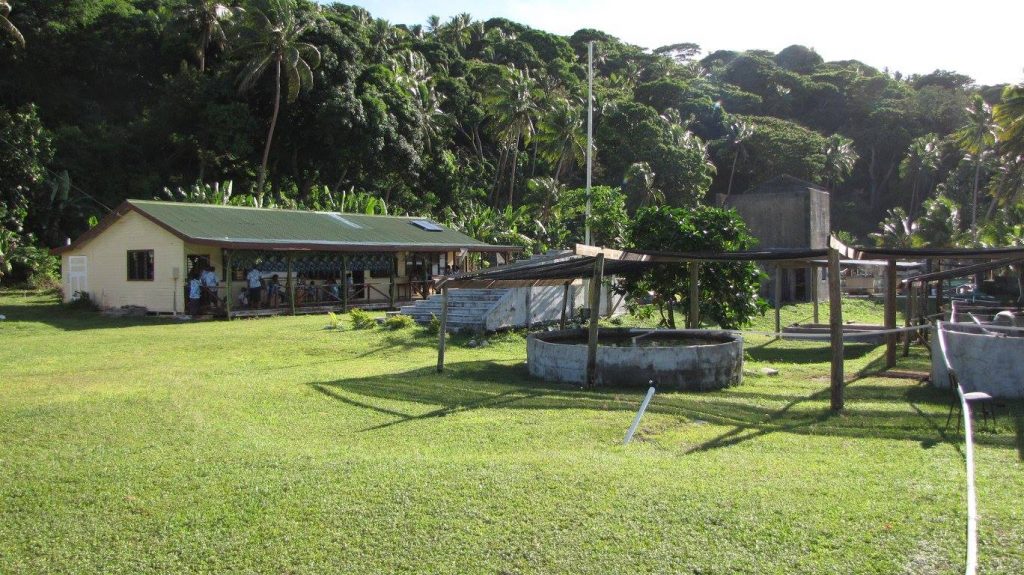

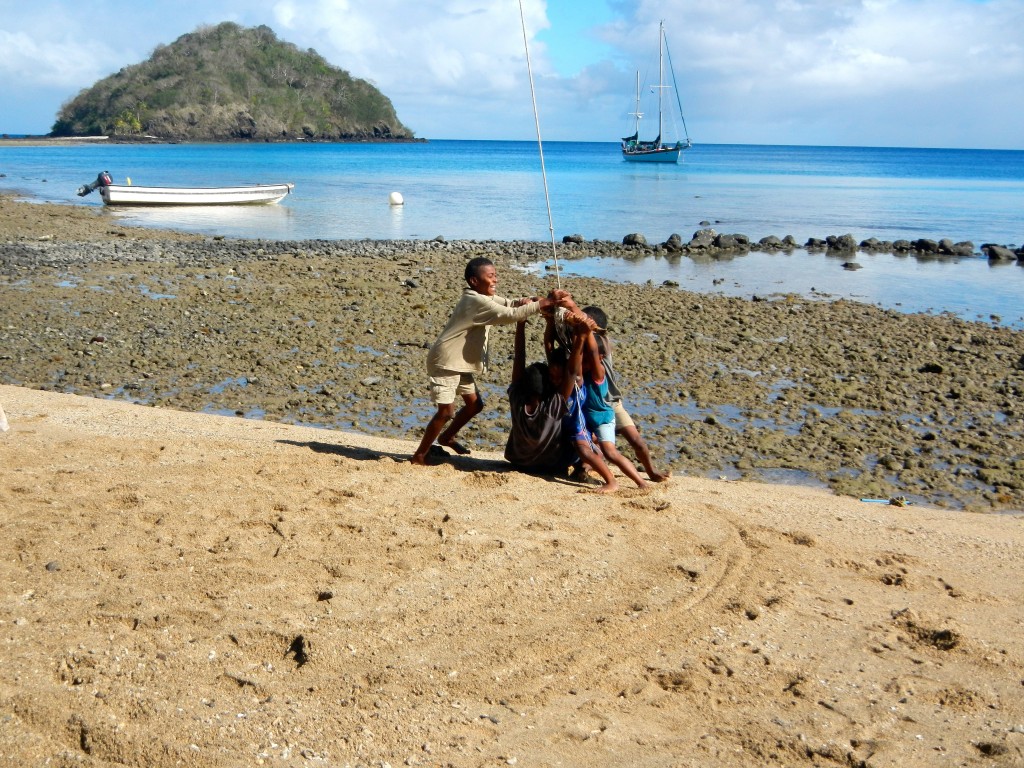
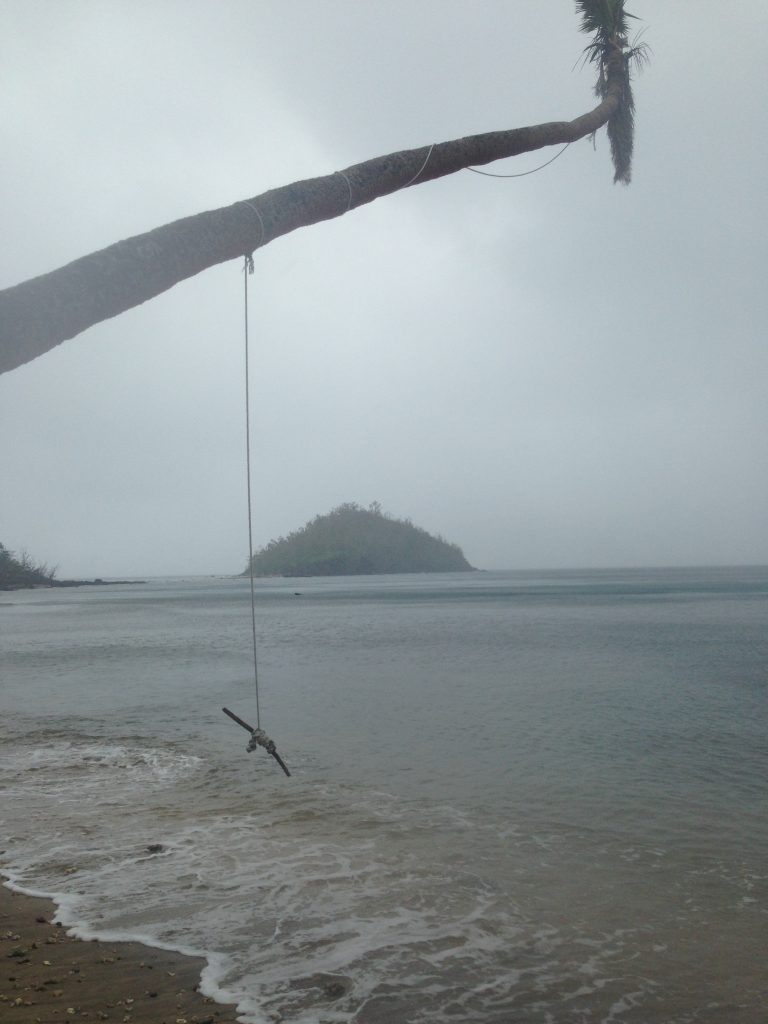
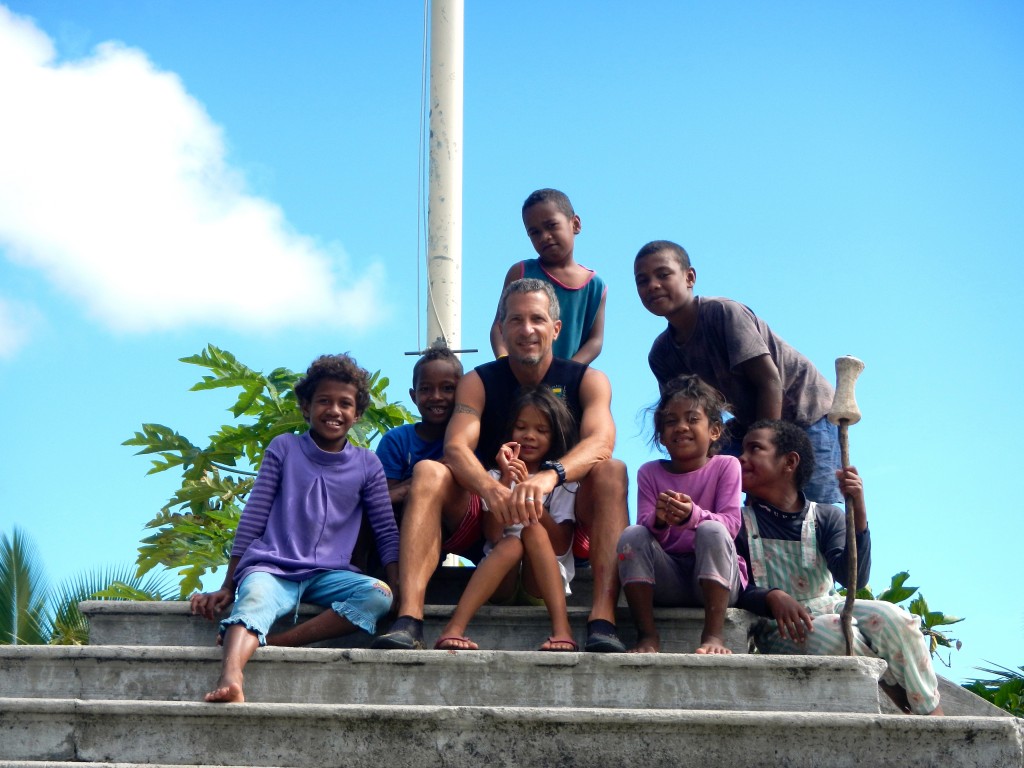
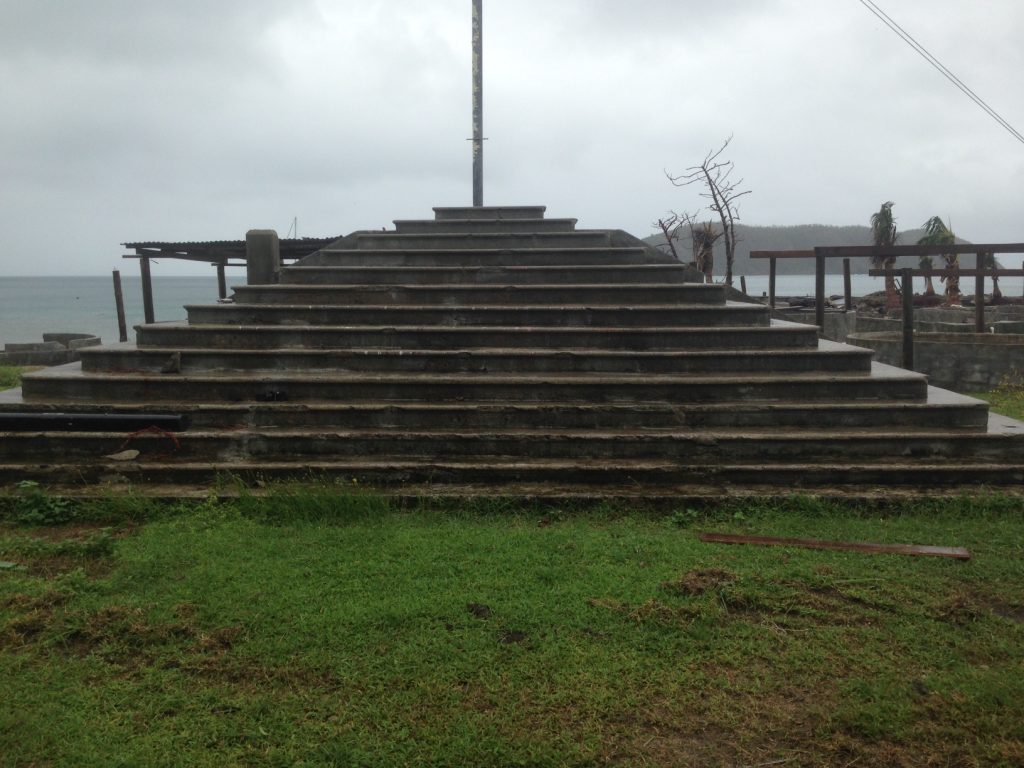
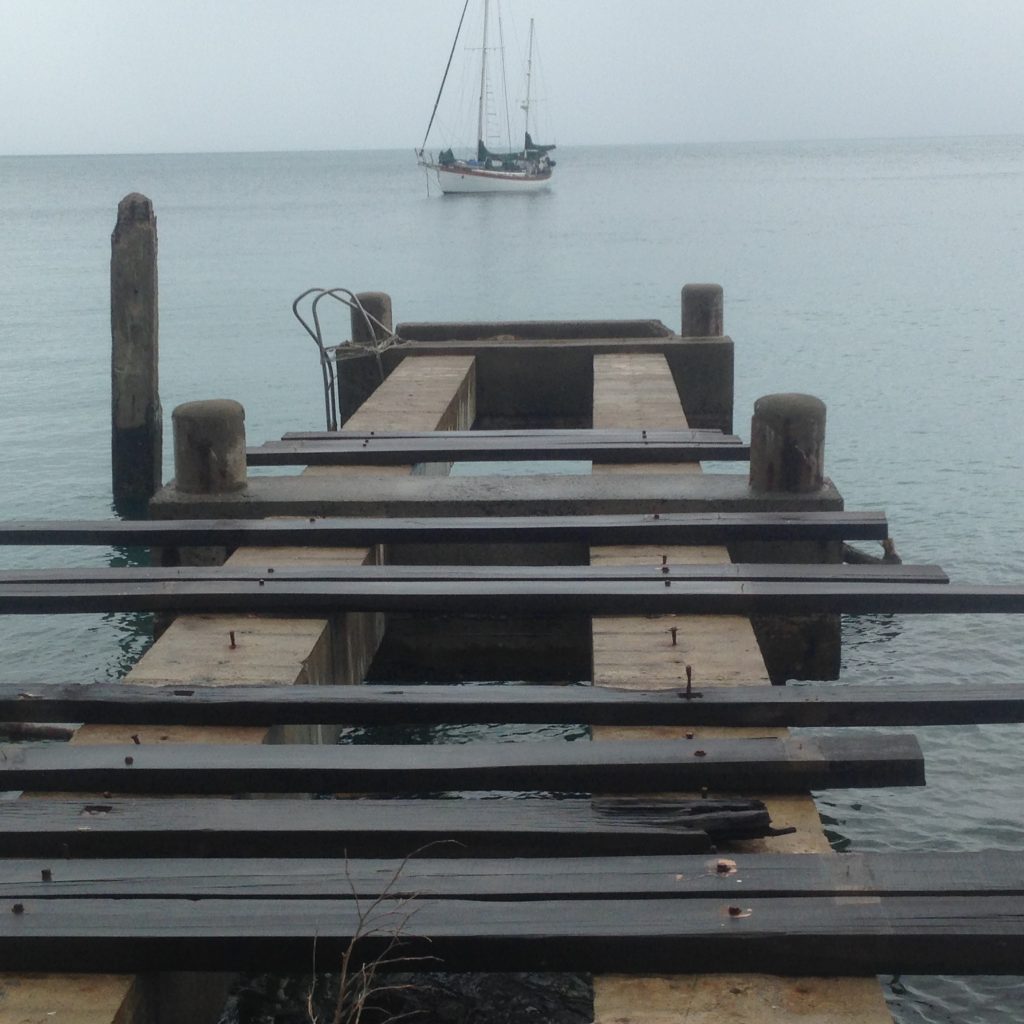
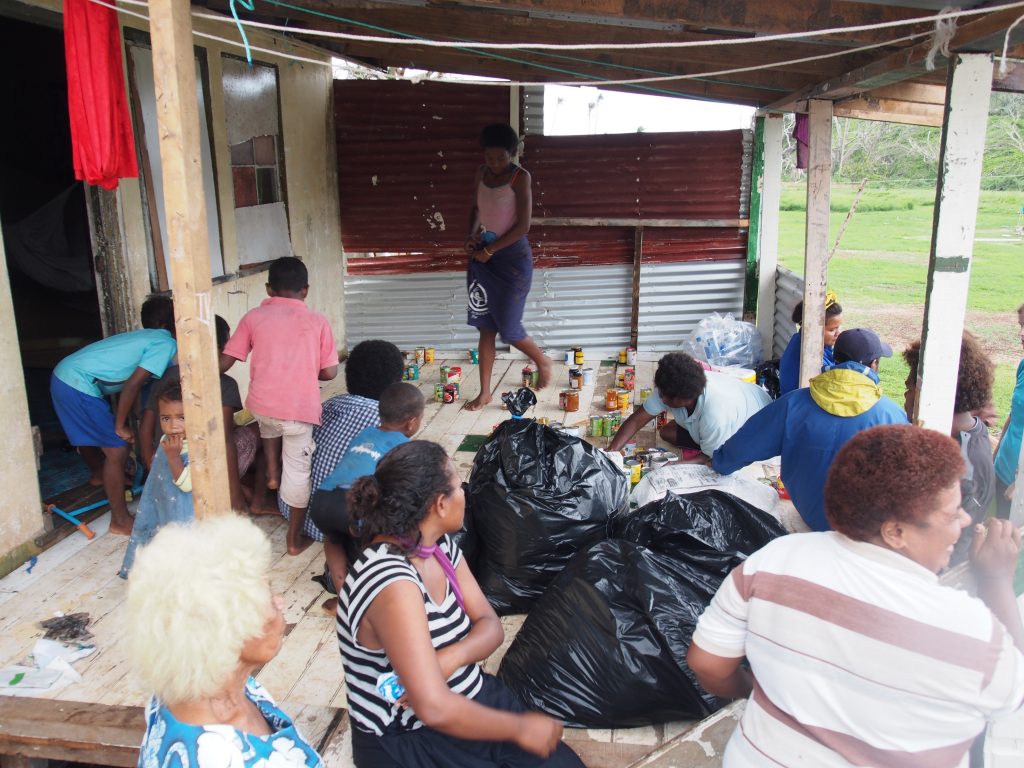
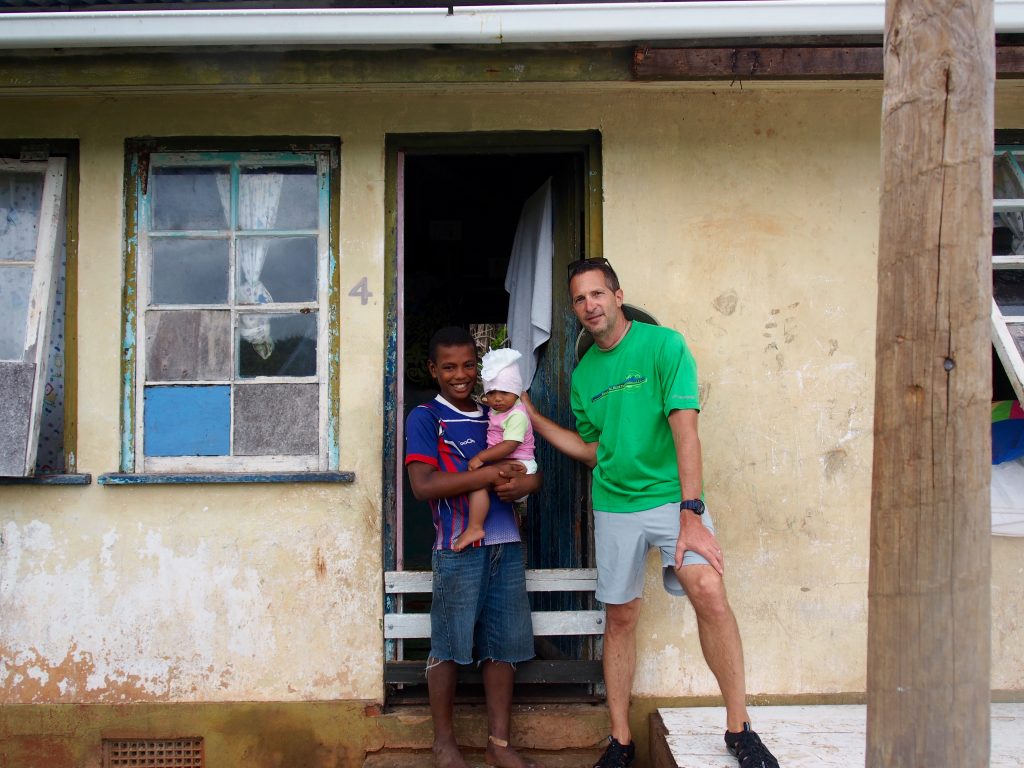
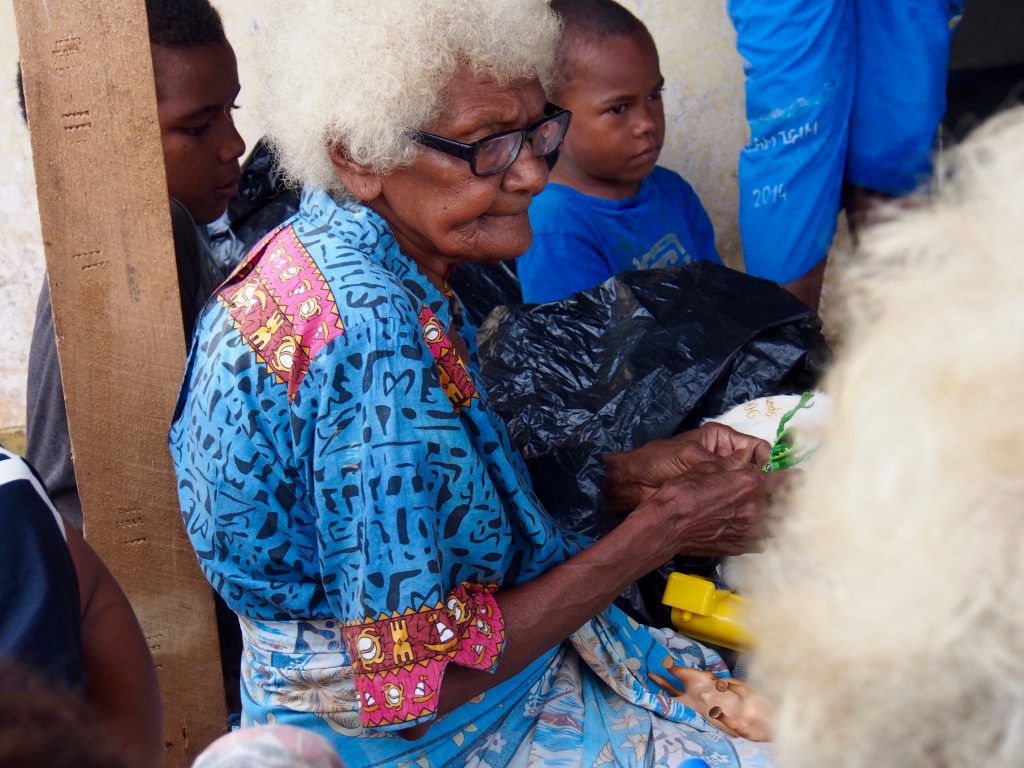
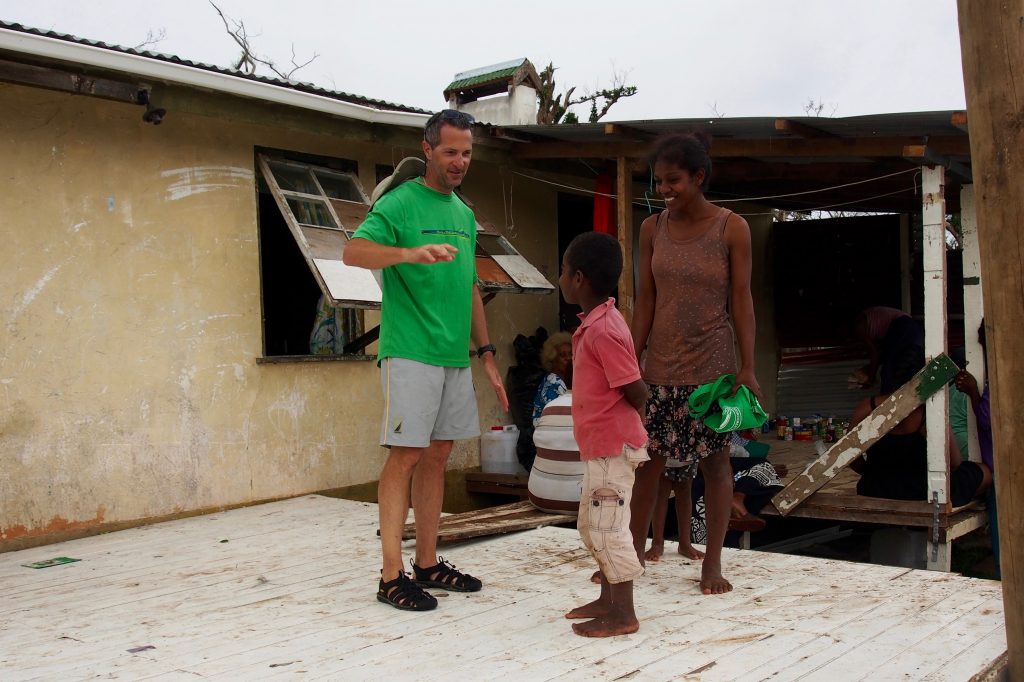
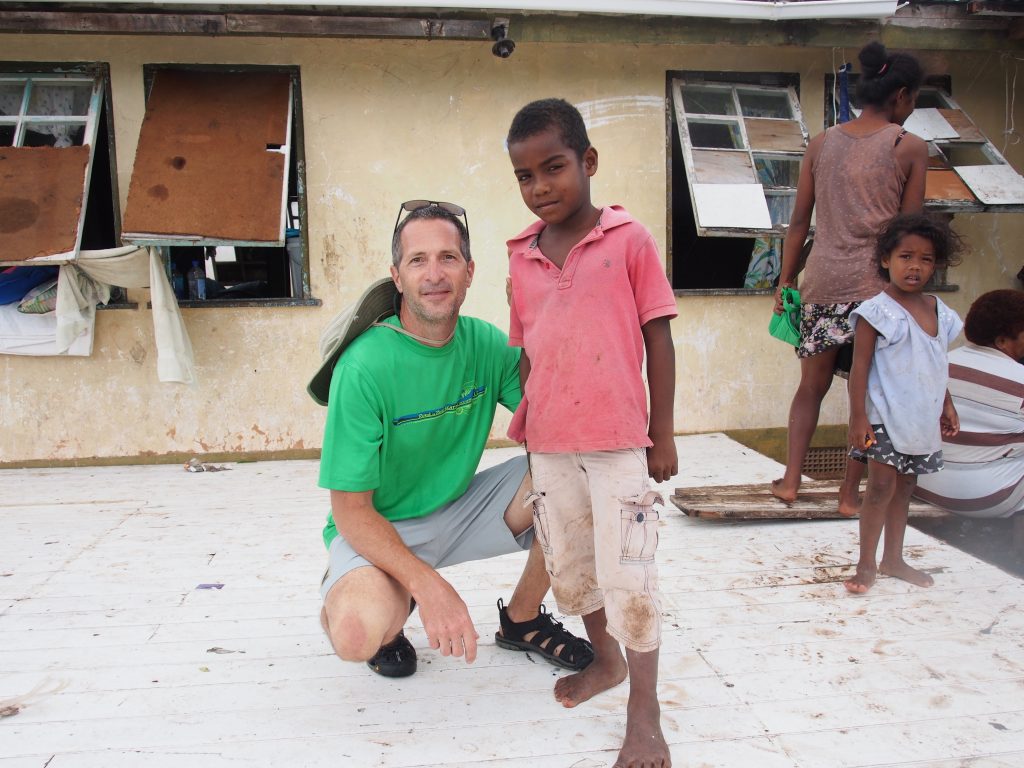
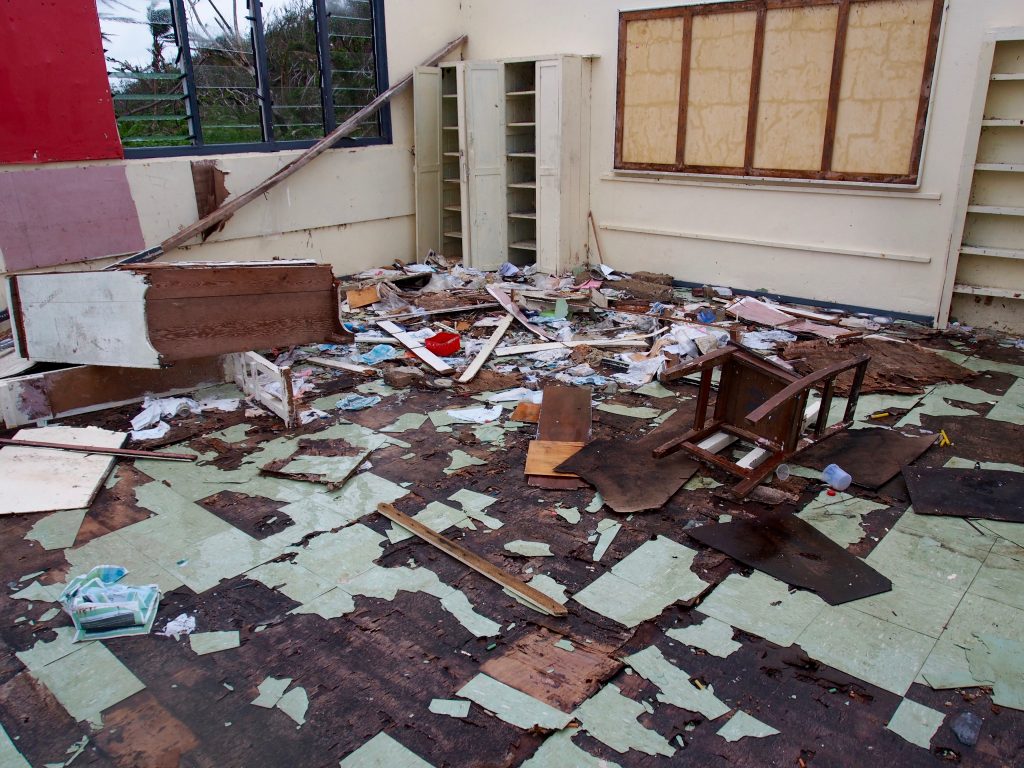
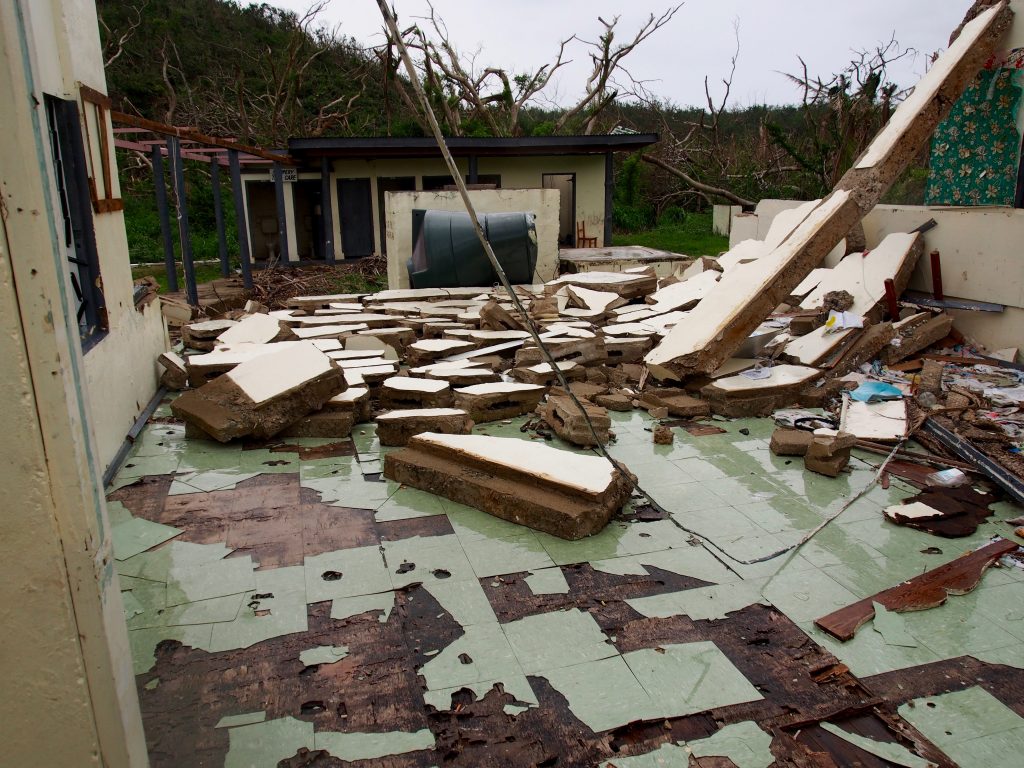
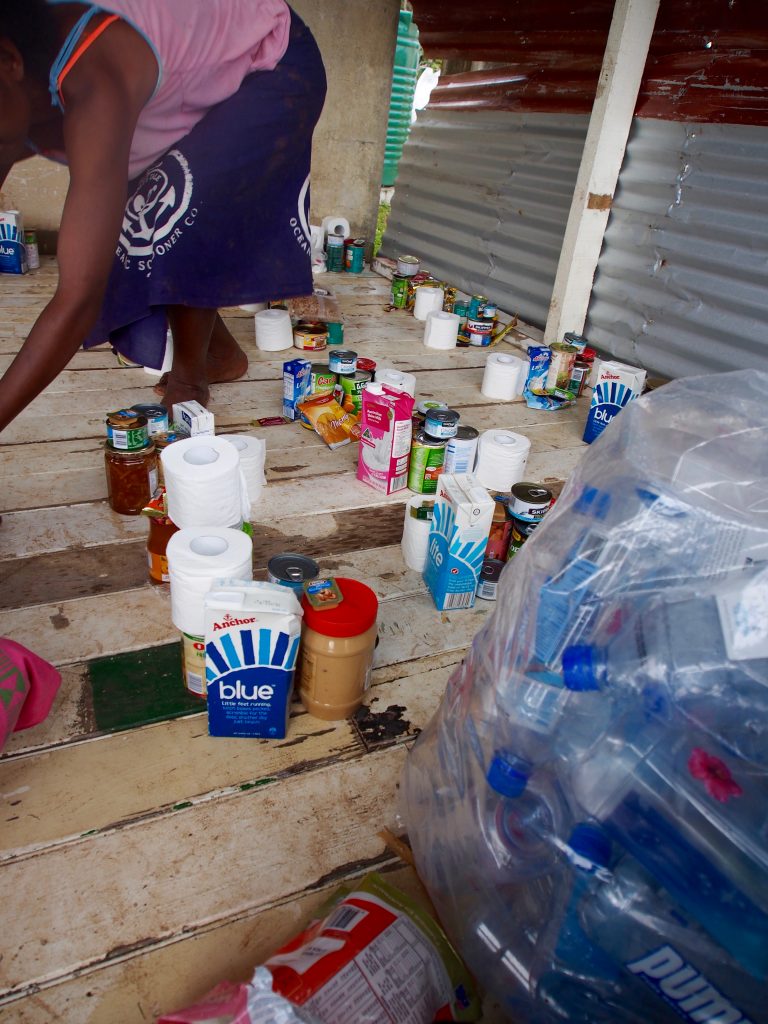
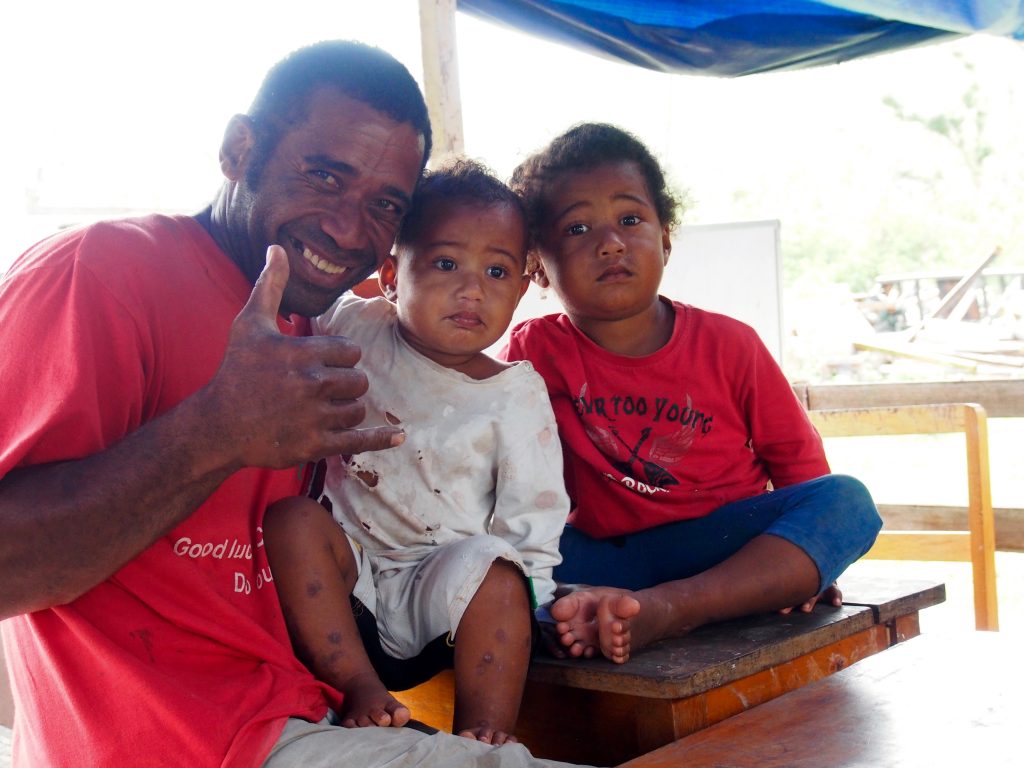

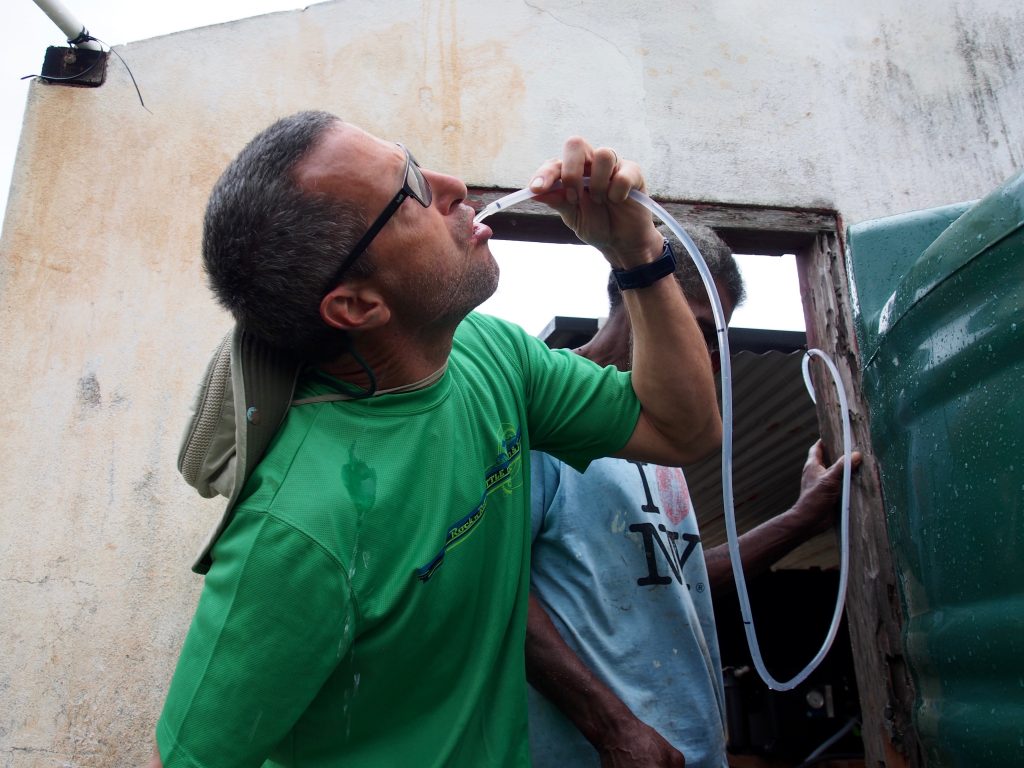
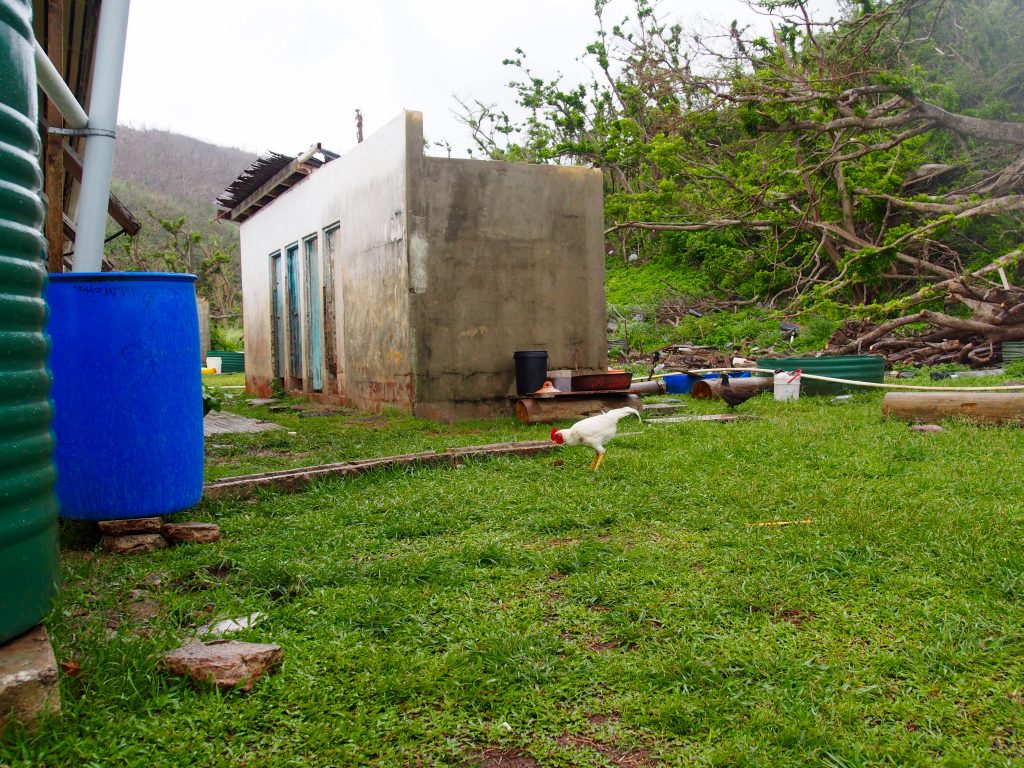
Sea Mercy
Sea Mercy (www.seamercy.org) is a non-profit organization whose vision is to be the most effective preventive, curative, promotional and rehabilitative floating health care provider and service delivery mechanism to support the remote citizens of the island nations. I found out about Sea Mercy while back in Seattle when I was tracking the cyclones in the South Pacific. Since I returned to Fiji early in the season, I decided to sign on as an aid delivery and assessment vessel. Prior to our arrival, a couple of 1st response yachts went to some of the hard to reach villages that got hit hard by tropical cyclone Winston. One such place, a small island called Makogai, took a direct hit. We spent several days on the island last year and it was one of the places I wanted to return to. Sea Mercy has a warehouse at Port Denarau, not far from Vuda Point marina, so that was our first stop after getting Apropos back in the water. The warehouse was full of donated items such as clothing, canned food, diapers, bags of rice, plastic water containers, and some larger items like tents, shovels, pitchforks, boxes of nails, and building materials. It looked like most items came from New Zealand and Australia. We filled the entire aft starboard berth with 3 large bags of clothing and shoes, 1 bag of toys, 4 bags of canned food, a sack of rice, and a bag of empty plastic water bottles (kids take these to back and forth to school for drinking water). Sea Mercy staff gave us the go-ahead to take everything to Makogai and asked us to report back as to what else they were in need of.
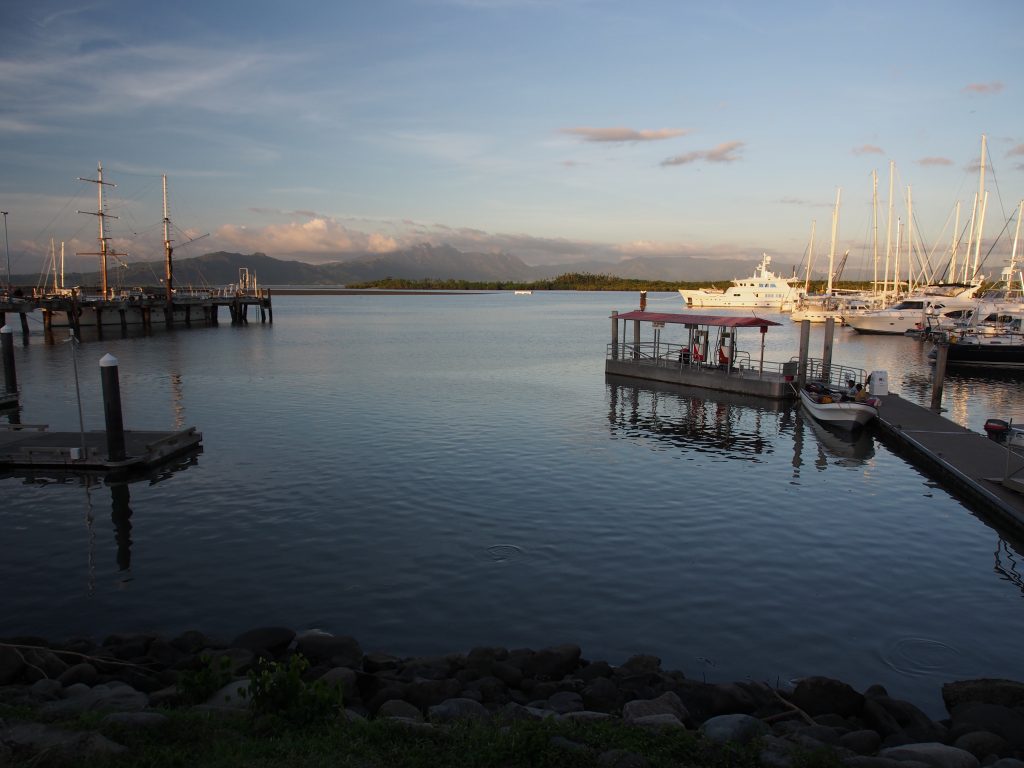
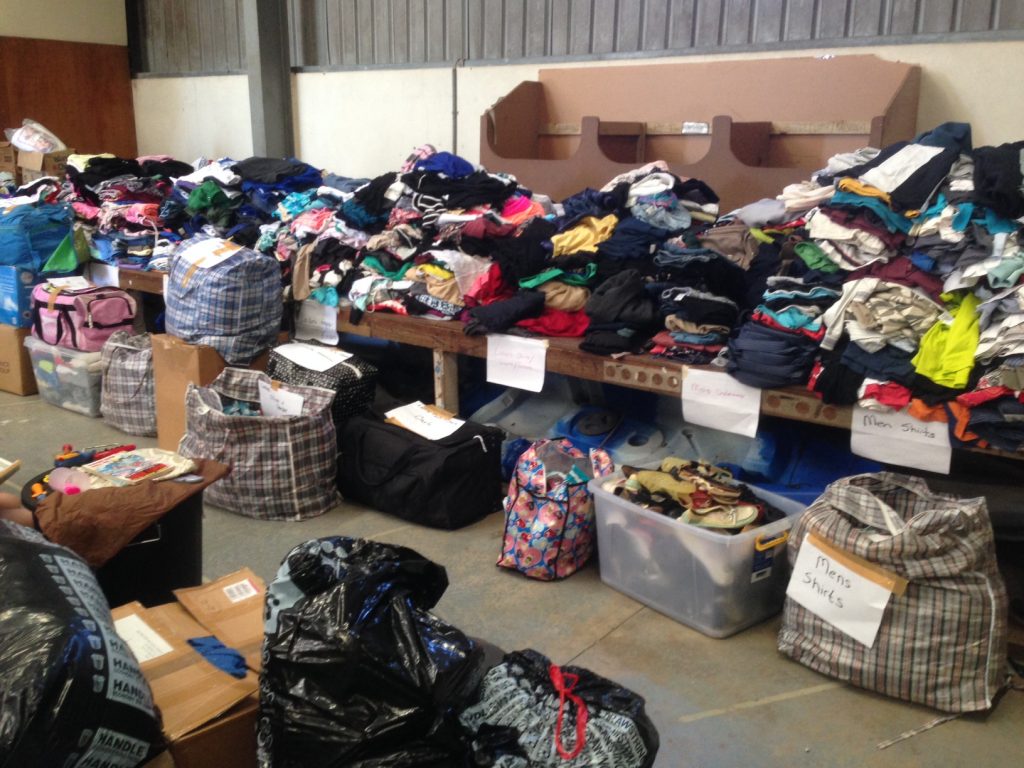
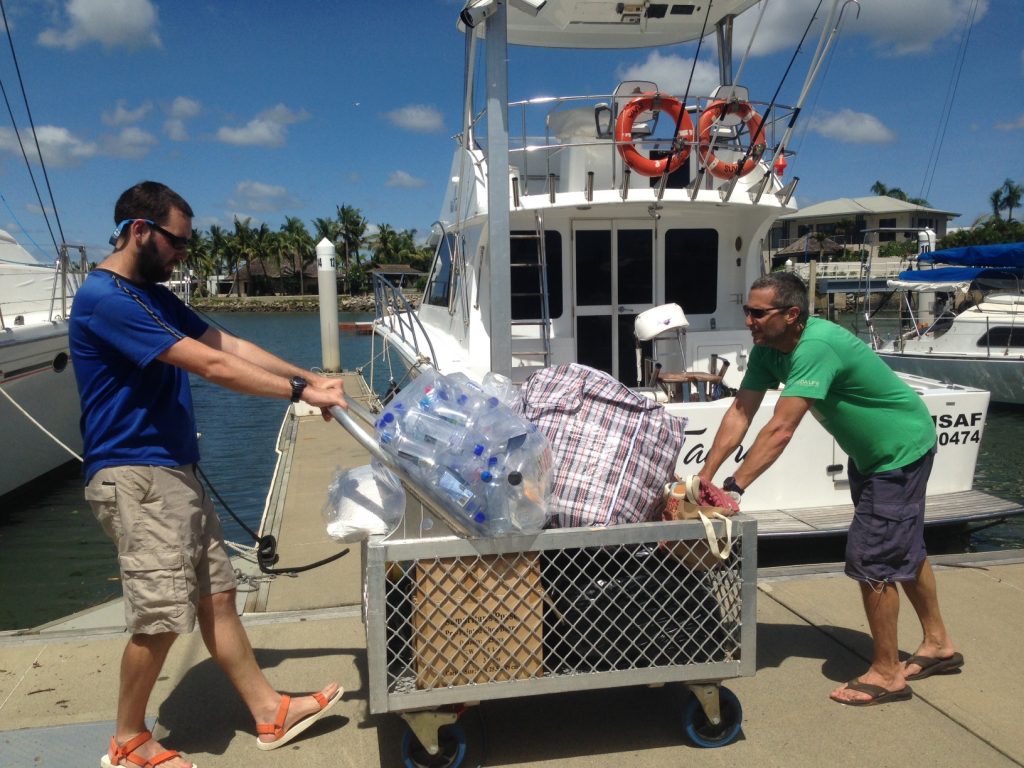
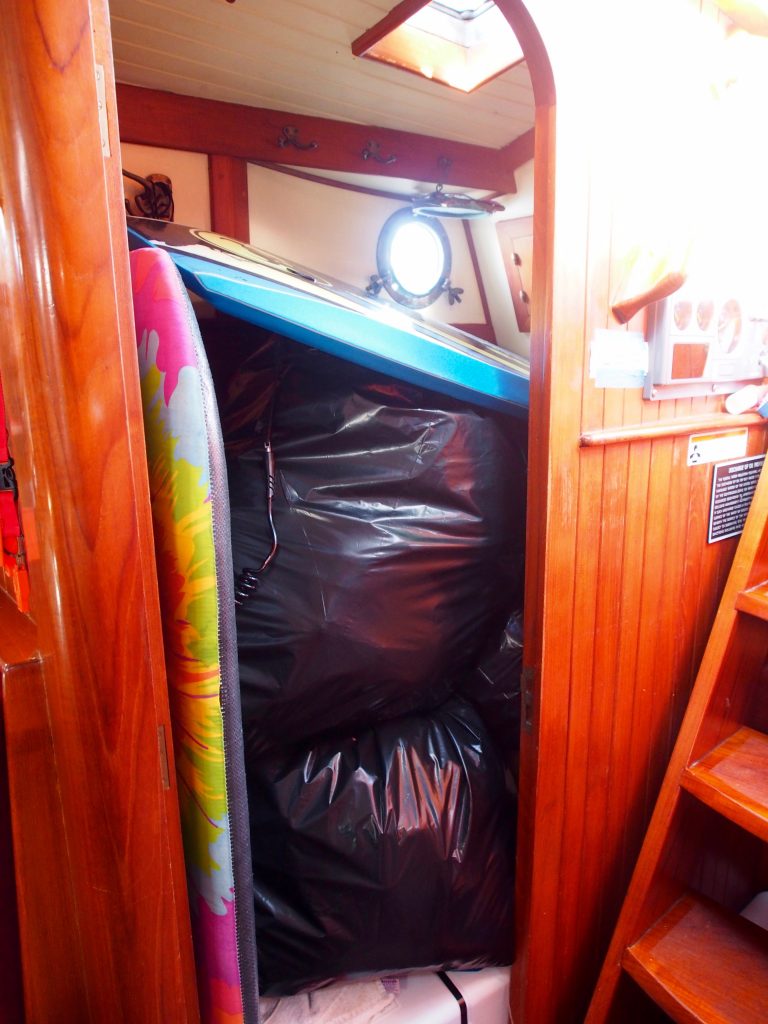
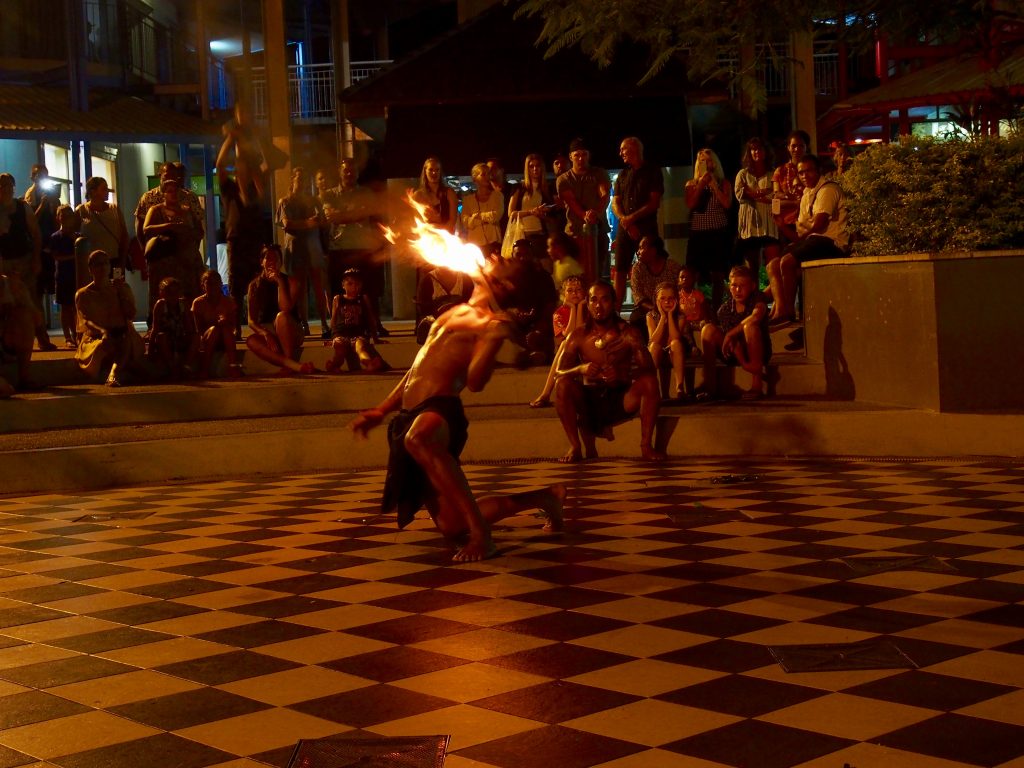
Final Preparations
A quick trip to Lautoka for provisioning, banking, and renewing a cruising permit was followed by a flurry of activity back at the marina. We finally got the boat out of the pit and into stands to do the bottom paint. With 4 of us working, we sanded and scraped, then rolled on 3 gallons of Interlux Micron Extra bottom paint and changed the zincs, then were launched into the water at the end of the day. Here’s a short video showing just how fast we worked!
